Protect your data
This site uses cookies and related technologies for site operation, and analytics as described in our Privacy Policy . You may choose to consent to our use of these technologies, reject non-essential technologies, or further manage your preferences.
- Resume and Cover Letter
- How to Include Relevant...

How to Include Relevant Coursework on a Resume (with Examples)
13 min read · Updated on September 11, 2023

If you are a recent graduate struggling with a lack of work experience, knowing how to include relevant coursework on a resume can be one of the best ways to create a more compelling resume narrative.
One thing that many recent college graduates have in common with one another is a general lack of work experience. That lack of experience can sometimes make it difficult for them to construct a resume that sells their potential to be the best candidate for a job. Fortunately, there are ways to still create a strong and compelling resume, even without experience. For example, did you take classes that might be relevant to the position? If so, including relevant coursework on your resume may be the perfect solution to your resume challenges.
In this post, we will explain how you can identify relevant coursework and where it should be listed in your resume. We will also include several examples of relevant coursework on a resume so that you can see the best options for using these details to strengthen your job search efforts.
What is relevant coursework?
Of course, when we talk about relevant coursework, we are talking about those classes and educational activities that have direct relevance to the position you are seeking. The first thing you need to recognize is that many of the classes you took during your college career will not need to be included in your resume. After all, most degrees require that students complete any number of basic foundational courses that will have little if any relation to their chosen job — at least from a resume standpoint.
So, what types of classes, achievements, and activities should you focus on as you identify suitable courses to add to your resume? While this sounds like a simple question, it actually requires some serious thought and evaluation. Fortunately, there are some basic rules that you can follow as you make that determination. Below are just some of the potentially relevant things that you might want to include in your resume:
Coursework that demonstrates that you have a foundation of knowledge in a required aspect of the job you are seeking. For example, if communication skills are needed for the position, you should include courses that focused on business communications, writing, etc.
Projects that are related to particular job skills. For a marketing position, you should include any marketing-related projects you completed during your studies. Or you could include research projects you engaged in if you are seeking a job where research skills are essential.
Academic achievements can also be included, including notably high GPA scores or awards you received. Also, be sure to include any related extracurricular activities. That could include everything from clubs to sporting activities if they helped you develop skills that would be useful for the job.
Again, do not include coursework that has no bearing on the job at hand. This will require you to carefully consider each course to determine its relevance. One way to do that is to read the job posting and select keywords and phrases of import that seem to be describing the skills or educational qualifications needed for the job. Then go through your coursework and try to match courses to those skills. As you do so, remember that some basic courses like those involving communication—both written and verbal—may be included, since communication is one of those soft skills that every company values .
You can learn more about the difference between hard and soft skills by reading our excellent article, Key Differences Between Hard Skills and Soft Skills . A better understanding of those critical soft skills can help to ensure that you don't underestimate the value of any of your classes. There's a great chance that you have more marketable soft skills than you realize!
When should you include relevant courses on your resume?
Before you add your job-related classes to your resume, you should decide whether it is necessary. For example, you can almost certainly benefit from including your relevant coursework on your resume if:
You recently graduated from school or are beginning the process of looking for a job because you are close to graduation. Students and recent graduates typically have little or no real job experience to highlight skills. Fortunately, their studies and project assignments will likely have helped them to develop important skills that they can highlight in their resumes.
Your educational achievements are necessary to qualify for the position you are seeking. In those instances, your prospective employer will be interested in knowing that you have fulfilled those requirements and have the basic knowledge needed for the position.
There may also be times when you need to include coursework even after you have been in the workforce for some time. For example, if you are switching careers and your current work experience does not include the skills needed for your new job, that may not matter as much if you can show that your studies prepared you for the role.
Including coursework related to your minor
As you select relevant coursework for your resume, don't forget to consider courses of study related to your minor too. Hopefully, you will have selected a minor that is at least tangentially related to your desired career path. If so, then chances are that some of the courses you completed may have some relevance that can translate to a useful resume listing. For more information about minors and when they can be added to your resume, read How to Include a Minor on Your Resume .
When should I take coursework off my resume?
Obviously, there will be times when you should forgo any mention of your courses in your resume. Some examples of situations where you might not need to list your specific coursework include:
When your coursework is not really relevant to the position you seek. Including irrelevant coursework could actually distract from your important skills and experiences.
Situations in which coursework was completed so long ago that the information is no longer useful. For instance, many technology-related courses can lose their value over time. Other examples include old marketing courses and other educational achievements that involve skills that have evolved rapidly in recent years.
If your resume is already filled with enough work experience and skills that there is no need or room for specific course details. Remember, you want to add your courses to enhance your value as an employee. If adding a particular course does nothing more than add length to the resume, skip it.
Where should relevant coursework be listed in your resume?
In most resumes, the coursework should be placed in the education section, with a subheading titled “Relevant Coursework.” When creating this part of the education section, you should insert the subheading under the name of your degree, with a list of the courses you studied. For example:
Bachelor's in [Name of Degree]
[College Name, City, Graduation Date]
Relevant Coursework: [Course 1], [Course 2], [Course 3], [Course 4], [Course 5]
Alternatively, you can also opt to show your courses in a bullet-point list if your resume is short and you need to fill more space. You can even elaborate on each course with a few words to describe the skills you learned in class. For example:
Relevant Coursework:
If you have no actual work experience, you may even want to consider using your education section as a substitute for that experience section. If you choose that option, you may want to place the education section closer to the top of your resume and flesh out each course in the same way you would detail a job listing in your work experience section. That means using detailed descriptions that include quantifiable results highlighting your achievements.
Key tips to remember when listing relevant coursework
Before we show you some examples of how to list relevant coursework on your resume, there are a few tips that can help to ensure that your final product is as compelling as possible. By incorporating these ideas into your resume creation process, you can more effectively make that all-important great first impression on any hiring manager.
Only list relevant coursework if you lack sufficient work experience to meet the job requirements.
Always make sure that the courses you list highlight skills and knowledge needed for the position. If a course has nothing to do with your chosen line of work, it has no place in your resume.
Relevant courses may be related to hard and soft skills.
If you choose to use descriptions for each course, use that as an opportunity to insert relevant keywords from the job description. This can be a great way to ensure that your resume can get past any applicant tracking system .
Always proofread your entire resume to eliminate spelling mistakes, punctuation and grammar errors, and style or formatting discrepancies.
Make sure that you tailor your resume to fit the job you want. Since you will likely be applying for different jobs during your job search, you may need to modify your educational coursework details to align with the needs of each position.
Do not forget to include important skill information in your coursework descriptions. Again, try to use those job description keywords.
If you are maintaining an updated resume throughout your educational career, be sure to continually edit your resume as your coursework evolves over time. This can make it easier to keep it updated and can save you some time when your job search begins.
3 Examples of relevant coursework on a resume
In this final section, we will explore some different examples to show you how you can successfully incorporate relevant coursework into your resume. We have included a couple of examples of the most basic listing options, as well as an expanded sample that enables you to provide more details and skills. You can refer to these samples and use them as guides as you create your own relevant coursework section.
Example #1: The Basics
Bachelor's in Information Technology
My College, Anytown 2022
Relevant Coursework: Cyber Security 101, Business Intelligence, Application Development, Networking and Telecom, Artificial Intelligence
This simple listing would be a good option for anyone who has at least some relevant work experience but who still needs an additional boost to meet the job requirements. In this case, the job seeker's coursework listing is presented in a minimalist format, documenting the specific courses and areas of focus—but without any other information about those studies.
Example #2: Bulletpoint List of Courses
Cyber Security 101
Business Intelligence
Application Development
Networking and Telecom
Artificial Intelligence
This option is similar to the first example but presents the classes and areas of focus as separate bullet points. This provides additional emphasis for each area of study, while also taking up a bit more space in the resume. This can be a great option if your resume is a little short and you need to expand the content.
Example #3: Detailed Format
My College, Anytown
Completed in 2022
Certified Cyber Security Expert, skilled in protecting data, information, and infrastructure.
Coursework included training on risk analysis, threat mitigation, compliance assurance, and cloud security.
Completed multiple projects and research assignments designed to test knowledge and adaptability to various types of cyber threats.
Business Intelligence
Business analytics certificate, training focused on data interpretation and communication to resolve business problems with a data mindset.
Course included 3 projects testing analytical skills using hypothetical business challenges based on real-world business scenarios.
Application Development
Courses focused on the development of software coding skills used for web application creation, troubleshooting, and debugging.
Final course project involved the creation of an independent web app to streamline online sales processes for a test company.
Training focused on routing, packet switching, and cybersecurity needs.
Spent eight weeks as a volunteer networking intern for a local ISP, receiving hands-on training from experienced networking professionals.
AI and machine learning studies, emphasizing tech integration into business processes, impact on sales and marketing, and ethical concerns.
Conducted study for the course final, evaluating potential AI benefits for enhanced marketing in the digital age and impact on online sales.
This more detailed example is a superior option for those who have no work experience and need their educational credentials to highlight their skills. In this sample, each area of interest is accompanied by bullet point details describing the types of courses studied and the lessons or skills developed during those classes. In addition, bullet points are added to highlight specific achievements, describe studies and real-world application of skills, and demonstrate competency in the subject matter.
This type of format can enable your coursework section to serve as a replacement for work experience if you have never been employed. When used for that purpose, you can expand on each course listing to include additional skills and keywords from the job post. Simply add new bullet points where needed to flesh out each area of emphasis.
Again, if you choose to replace your work experience section with this relevant coursework section, make sure that you move this section closer to the top of your resume so that it receives more prominence. Basically, if your strongest selling point is your education, then make sure that your important courses are one of the first things that a prospective employer sees. Also, you may want to highlight your educational qualifications in your resume summary so that the reader expects to see those coursework details.
Don't underestimate the power of a well-crafted and compelling resume
Finally, it is important to reiterate just how vital it is that your resume makes the best possible impression. When you approach the labor market with little or no work experience, you are usually already at a competitive disadvantage. There will almost always be someone else who has a similar level of skill and educational background, as well as real-world experience. To compete against a qualified rival, you need a resume that can effectively sell you as the best candidate for the job.
For recent graduates and job seekers moving to entirely new careers, a lack of relevant work experience can be a major impediment to landing job interviews and employment offers. One way to overcome this obstacle is to learn how to use relevant educational coursework on your resume to highlight your qualifications and skills. Hopefully, this post and its resume examples can provide you with the inspiration and help you need to translate your educational experience into a compelling resume narrative. Fortunately, there are ways to ensure that your resume effectively positions you to have the best chance at landing any interview and job. To make sure that your resume is up to par, get a free resume review today. And if you really want to be sure that your resume is ready for prime time, take a few moments to discover just how easy it is to get professional resume assistance from our team of experts!
Recommended Reading:
What Should I Say About My Education On My Resume?
Ask Amanda: What's the Best Way to List Education on a Resume?
14 Reasons This is a Perfect Recent College Grad Resume Example
Related Articles:
Do Hiring Managers Actually Read Cover Letters?
How to Create a Resume With No Education
From Bland to Beautiful: How We Made This Professional's Resume Shine
See how your resume stacks up.
Career Advice Newsletter
Our experts gather the best career & resume tips weekly. Delivered weekly, always free.
Thanks! Career advice is on its way.
Share this article:
Let's stay in touch.
Subscribe today to get job tips and career advice that will come in handy.
Your information is secure. Please read our privacy policy for more information.
How to List Relevant Coursework On Resume [Tips & Examples!]

If you’re a college student, recent graduate, or entry-level professional, chances are you don’t have a lot of professional experience to list on your resume.
This, in turn, might make you feel insecure about your application, especially considering that the work experience section is among the most important section of a resume.
Well, listing your relevant coursework might just be the answer!
By listing the courses that are relevant to the job position or internship you’re applying for, you can show recruiters that while you don’t have much work experience, you have the right skills and knowledge for the job.
But what is the right way to list relevant coursework on your resume and is there a time when you shouldn’t list it all? And what exactly is relevant, to begin with?
In this article, we’re going to answer all those questions and more. Read on to learn:
When Is Relevant Coursework Necessary on a Resume?
- How to List Relevant Coursework on Your Resume in 3 Steps
7 Tips on Listing Relevant Coursework on Your Resume
Resume example with relevant coursework.
And more! Let’s dive right in.
What Makes Coursework Relevant?
Professional experience is one of the most important sections of a successful resume, but you first need to land a job to start building it.
Which begs the question, how can a recent graduate or entry-level professional prove they’ve got what it takes for an entry-level position with no, or minimal, professional experience ?
Well, this is where coursework comes in.
Together with academic projects and achievements, as well as extracurricular activities, listing relevant coursework can help students and entry-level professionals show they’ve got the necessary skills for the job despite not having the relevant professional experience.
The coursework you list on your resume should actually be related to the position you’re applying for.
For example, if you’re applying for a job as a graphic designer, listing your achievements in your World History class won’t really impress recruiters. If, on the other hand, you mention that you were top of your class in Design and Layout , you’ll be effectively showing recruiters that you have great potential as an up-and-coming graphic designer.
To sum things up, here are the top cases when relevant coursework is necessary on a resume:
- When you’re still a student
- When you’re applying with an entry-level resume
- When you’re applying for an internship
- When the coursework is directly related to the job position
If, on the other hand, you have 2+ years of work experience in the field, as well as the needed skill-set, coursework on your resume will only take up space and can be skipped entirely.
Checking the job description is another way of determining whether you should add relevant coursework to your resume. If, for example, the job description requires that you list your majors, GPA, diploma, or portfolio, chances are they’ll also be interested in your coursework, especially if it’s relevant to the position.
How to List Relevant Coursework on Your Resume in 3 Steps
So you’ve established that you should include relevant coursework on your resume. Now, you may be wondering where exactly to include it.
As a rule of thumb, coursework is listed under an applicant’s education history. Depending on whether you have any professional experience to list, the education section may come before or after the work experience section.
Here are the four best ways to add relevant coursework to your resume:
#1. Add a New Line in Your Education Section
Instead of creating a fresh section called “Relevant Coursework,” you’re better off just adding the courses to your education section.
As a student resume can be one-page max , this helps you to save up the space needed for other essential resume sections.
Here’s a practical example of what this looks like on the resume of a recent graduate applying for a high-school teaching position:
BA in World Literature
UC Berkeley
2012 - 2016
Relevant coursework: British Literature, American Literature, Medieval Literature, William Shakespeare, Language and Cognitive Development
#2. List Your Relevant Coursework in Bullet Points
To make your relevant coursework more visible and reader-friendly, list them in bullet points underneath your diploma title.
Here’s how the above Literature graduate’s resume would look like following this formatting:
Relevant Coursework:
- British Literature
- American Literature
- Medieval Literature
- William Shakespeare
- Language and Cognitive Development
#3. Explain How The Coursework is Relevant to the Position
Finally, if you want to take your relevant coursework resume section to the next level, add detailed explanations to your courses to support how they’re relevant to the position you’re applying for or how they helped develop your skill-set.
A recent study found that companies are suspending the use of degree completion as a proxy and instead now favor hiring on the basis of demonstrated skills and competencies . This means that your relevant coursework should aim to show exactly how it has helped you acquire the skills required for the position.
Here’s an example of how that would play out for a journalism student applying for an entry-level reporting job at a newspaper:
B.A. in Journalism and Mass Communication
Northwestern University, IL
2015 - 2018
- Writing and Reporting: Learned the ins and outs of news reporting through several practical assignments and exams.
- Media Ethics: Got introduced to the most essential ethical theories and decision-making strategies in journalism and wrote a paper on Ethical Journalism and Human Rights that got published in the Political Communication Journal.
- Gathering and Developing the News: Gained first-hand experience in interviewing, researching, newsgathering, and communicating with sources.
To make sure your coursework is as relevant as possible, check out the required skills in the job description. If you have taken classes that have helped you master those skills, then make sure to mention how by adding all the necessary details, as shown above.
Here are seven tips you should always keep in mind when listing coursework on your resume:
- Take advantage of keywords . When evaluating your resume, recruiters scan it to look for the keywords that were mentioned in the job description (e.g. skills, experiences, etc.). You can re-read the job ad and, where relevant, include these keywords in your coursework section.
- Tailor your resume to the job offer. In order for your coursework to add value to your resume, it really needs to be relevant. So, if you’re applying for a job that doesn’t take academic background into consideration or that’s completely unrelated to your major, you’re better off omitting coursework altogether and focusing on other important sections, such as your hard and soft skills.
- List online courses. If you’ve completed some online courses that are relevant to the position you’re applying for, feel free to also include them under relevant coursework.
- Add value through other academic achievements. Relevant coursework can say a lot about your potential, but recruiters will be even more easily convinced if you support it with other academic achievements, including your GPA, extracurricular activities, etc.
- Show how you’ve grown. When you’re explaining your relevant coursework in detail, you can include how you’ve grown by listing all the skills you acquired in the process. Those can be both soft skills, like communication and interpersonal skills, and hard skills like programming or doing extensive research.
- Change the relevant coursework as you progress. Many college students start working in their freshman year. If that’s the case with you, make sure to update your resume from year to year to reflect your academic journey and most recently acquired skills.
- Check for errors. A well-written, error-free resume shows that you’re attentive to detail and that you care to make a good impression.

Key Takeaways
And that’s a wrap! You now have all the necessary information to add relevant coursework to your resume effectively.
Before you start working on your resume, though, here’s a brief summary of the key points covered in this article:
- Listing relevant coursework on your resume is not mandatory but can be very helpful if you’re a student or an entry-level professional.
- If you have at least a year of professional experience, drop your relevant coursework and focus on tailoring your work experience and skills sections to the position.
- Relevant coursework typically goes under the education section. You can either give a general or a detailed summary of your coursework.
- You can make a separate relevant coursework section only if the job you’re applying for requires a strong academic record.
- Your coursework needs to be relevant to the position. This means you should leave them out of your resume if they have nothing to do with the role.

To provide a safer experience, the best content and great communication, we use cookies. Learn how we use them for non-authenticated users.
How To Include Your Relevant Coursework On A Resume
In This Guide:
How important is it to list relevant coursework on a resume as a college student, how can i include relevant coursework on a student resume, when to avoid coursework on resume, what other sections can you add that can have more impact than coursework, volunteer experience, extracurricular activities, passions/strengths/interests, relevant coursework on resume – takeaways.

In today’s hiring landscape, your resume needs to quickly communicate all of your potential value to an employer. If you’re a student or recently graduated, your practical job experience may still be poor – but your coursework is probably rich.
So should you include the relevant classes you took on your resume? You can!
However, there are some factors you should consider before listing your coursework. You need to think about where you are in your career, what is the position you are applying for, and how relevant your education is to the job description.
Don’t get scared, it is not so much. Stay with us. This article will help you decide whether you need to include your relevant coursework.
You can also browse through our Resume Examples where you can see a perfect one for your dreamed position.
Upload & Check Your Resume
Drop your resume here or choose a file . PDF & DOCX only. Max 2MB file size.
If you are a student or have just graduated, it is possible that you don’t have enough professional experience to show. So a good way to demonstrate your expertise is by including your relevant coursework.
However, if you already have a year or more work experience, this section won’t be much of a help.
Then you should focus on the professional experience and achievements you’ve accomplished.
Even if you are a student or freshly graduated, there are jobs, for which relevant coursework won’t be helpful. For example a cashier or a waiter. If you are looking for these jobs, better emphasize on your technical skills and past experience.
If you’re applying for a job that emphasizes the importance of academic experience, like an internship or other education-focused position, it would be best to include a relevant coursework section on your resume.
Whether they are needed or not, look through the job description. This could help you understand what to write. If they’re looking for a certain diploma, certification, portfolio or GPA, these are indicators that you should include.
How much coursework you fit into your resume and where you include it depends on three factors:
- The number of relevant courses you’ve taken
- The detail you want to include
- The space you have
Most people include relevant coursework in the education section of their resumes.
To do this, just write “Relevant Coursework” beneath the degree name, and then use commas to separate the titles of the courses.
If you have enough space, you could also make a bullet list. This way it would be easier for the Recruiter to read.
Another way to write it is a separate section.
We, from Enhancv, have made that easy. Just go to our resume builder and make the most of it.
Write your relevant courses as a separate section if you want to include more than just the names of the classes. A perfect way to tell the Recruiter what you have learned through your studies when they are related to the job you are applying to.
Couple with academic achievements / GPA
If you don’t want to use a separate section, or you don’t have enough space for it, you can always couple them with your academic achievements or with your GPA.
Decide which to use in your resume, after you read the job description and see which is going to be more helpful to you to get that job.
If you have created a separate section for your coursework, just write the most important courses, depending on the job description.
Don’t put in all of your classes. It is going to take a lot of space and it would only distract the Recruiter.
If your coursework is crucial to the position consider putting it closer to the top of your resume.
If the class is necessary for the Hiring Managers don’t put it in the education section, because it could get lost along with all of the information.
Only list the names of your classes on your resume. Your university probably uses an internal system to number your courses, however, the employers wouldn’t know or care what the numbers mean.
If you have created a separate section for your coursework write just the most important courses, depending on the job description.
Don’t put all of your courses. It is going to take a lot of space and it would only distract the Recruiter.
Only list the name of your classes on your resume. Your university probably uses an internal system to number your courses, however, the employers won’t know or care what the numbers mean.
As we said earlier, coursework is a good way to show your educational achievements. However, there are times when it’s better not to include them.
If it’s been some time since you have been in school and the coursework is outdated, it might be best to leave the specifics off your resume.
What is more, keep an eye on the length of your resume. If you have just graduated or still a student, better make it no longer than one page. If there is no space for the related coursework, don’t include them if they are not specifically asked for in the job description.
Don’t include courses that are in no way relevant for the position.
If you have successfully finished a course in “Art History”, but you are applying to a position in a call center, don’t include it in your resume.
It will not help you to get the job you want and it will distract the Hiring Manager from your skills related to the position.
There are many other sections, which you can include if you have no experience. And sometimes, they could be much more important than the coursework.
According to Deloitte, 82% of hiring managers prefer applicants with volunteer experience.
They believe volunteer work makes you a good leader and strengthens your communication skills.
You should include your volunteer work when it is relevant to your professional development.
It can put you in good light and make you stand out among other applicants..
Check the great example from Avery Leclerq:

If you don’t have volunteer experience or it is not related to the position you are applying to, choose one of the sections below.
Focus the Hiring Manager’s attention on your experience outside of the university. It could be any extracurricular activity related to the position you are applying to.
For example, you could have been part of your local AIESEC team and participated in their initiatives.
Or you could have been part of a student organization or a club and made your university a better place to study in.
Adding this experience in your cover letter tells the Recruiter that you have developed yourself, your organizational skills, and you are motivated to help others.
Another way to make your resume look good without work experience is by adding activities and projects that are related somehow to the position you are applying for.
Even if they were university or academy projects, you have gained a lot while finishing them.
Recruiters will see that you’re a person who is dedicated to their career path and gains better skills and experience with side projects!
These can help you in identifying yourself and your own personality with the company’s culture fit profile.
Be sure to highlight your personality and unique qualities.
See this example:

As it’s clear, the candidate is an outgoing, extroverted person who enjoys nature, tech and education.
It is a creative way to show your hobbies and interest. What is more, the Recruiter could make a conclusion just by seeing the pie chart and the distribution of time.
There is another section you can use – Passion. It can be used to enhance the effect of the hobbies and interests section.
Adding them is not mandatory, but might be valuable when your life passions are relevant to the job.
Whatever you choose to include, always make sure you present it in a way that sounds and looks professional.

When both are included, they give a complete picture of who you are – not only in your work time.
That will significantly improve your chances of landing an interview, especially if you have a resume without job experience.
Here’s all you need to know about putting relevant coursework on a resume:
- It is not absolutely necessary to list relevant coursework in a resume;
- If you are a student or just graduated they could help you.
- If you have the experience, drop relevant coursework from your resume, and focus on your practical experience and skills.
- Use the education section to present the relevant coursework, you can separate them with commas or make a bullet-pointed list.
- Make a section only for your relevant coursework if the position you’re applying for requires a strong academic background;
- If it is not wanted by the job description, better drop it and focus on volunteer and extracurricular activities, hobbies, and interests relevant to the position.
Still not sure whether or not you should put relevant coursework on a resume? Or maybe it has helped you get your dream job? Write to us in the comments below!

- Resume Guides
Resume Critique Like a Pro: 11 Steps Walkthrough
How to answer "how do you handle stress" in a job interview, everything about reference letters – writing or requesting, past or present tense on resume: what should i use, the novice guide to creating a plain text resume (including templates), how to put entrepreneur on resume.
- Create Resume
- Terms of Service
- Privacy Policy
- Cookie Preferences
- Resume Examples
- Resume Templates
- AI Resume Builder
- Resume Summary Generator
- Resume Formats
- Resume Checker
- Resume Skills
- How to Write a Resume
- Modern Resume Templates
- Simple Resume Templates
- Cover Letter Builder
- Cover Letter Examples
- Cover Letter Templates
- Cover Letter Formats
- How to Write a Cover Letter
- Cover Letter Guides
- Job Interview Guides
- Job Interview Questions
- Career Resources
- Meet our customers
- Career resources
- English (UK)
- French (FR)
- German (DE)
- Spanish (ES)
- Swedish (SE)
© 2024 . All rights reserved.
Made with love by people who care.
How to Include Relevant Coursework on a Resume
Quick Navigation:
Should you include relevant coursework on your resume?
How to include relevant coursework on your resume, tips for mentioning relevant coursework on a resume, relevant coursework on a resume template, example of relevant coursework on a resume.
Highlighting relevant coursework on your resume as a student or recent graduate can offer some advantages. Students must often have to take a different approach when they don’t have much work experience to put on their resume. This article explains how to include relevant coursework on your resume so you can enhance your image when applying for a job.
Here are some situations in which it’s appropriate to include relevant coursework on your resume:
You don’t yet have much work experience
Work experience is a necessity for a resume. However, if you are inexperienced, submitting a resume with relevant coursework details can improve your chances of recruitment.
Coursework is relevant to the position
You should consider the type of job you are applying for before including any coursework. Different jobs have varying levels of educational requirements. Usually, relevant coursework details are important to add to a resume for an entry-level position that’s relevant to your desired career.
The coursework would benefit you in the position
Make sure that any coursework you add shows the employer your qualifications for the position. For example, if you are applying to be a professor or a researcher at an academic organization, it’s a good idea to add coursework that highlights your academic achievements.
The coursework positioning improves the look and style of your resume
Your coursework details should improve the appearance and content of your resume. In addition, make sure your coursework details only add as much to your resume as is necessary. You can add the most relevant classes to help save room and keep.
Consider the following steps while including relevant coursework on your resume:
1. Firstly, make sure your placement is accurate
The placement of your coursework information can create a big difference in the effectiveness of your resume. If your resume is meant to highlight your educational achievements, you may place it near the top of your document. However, coursework showing your experience or skills could be placed in the skills section. If your coursework is related to a specific type of job, you may include it in the education section.
2. Secondly, include only the most relevant details
You may mention the relevant coursework alone instead of adding other classes to your resume. This is also a good place to highlight any volunteer opportunities you’ve undertaken if you don’t have any prior work experience.
3. Thirdly, highlight the coursework with academic achievements
You can make your coursework more credible to the recruiter if it is supported by high grades that you have achieved in your classes. You may also add related educational awards to help create a positive impression on your potential employer. You can mention your academic honors, awards and other test scores that are relevant to your resume’s purpose.
4. Next, mention relevant personality factors or experience
If you have a skill that complements your coursework, you may include it on your resume. For example, if you are applying for a position as a content writer and mention coursework in which you were required to create an online magazine, you could discuss your ability to create search engine optimized content. Another method is to add relevant projects that you’ve completed. For example, you may mention any research papers you wrote that are pertinent to the job.
5. Fifthly, include online courses
Many people take online courses in their free time to enhance their professional skills. You can add these courses to your resume if they are relevant to your job application. If you have taken an optional course designed to improve your performance at work, include any relevant experience you gained from it.
6. Next, make sure to include the job post’s keywords
You may include keywords from the job post when discussing your coursework. The employer may find it relevant and thoughtful, and it can also help your resume make it through any applicant tracking systems the employer may be using. For example, if the employer talks about the importance of programming skills in their job posting, you can discuss a project in which you used JavaScript to help create a website.
7. After that, create an additional section if needed
You may create a subsection in the education section of your resume to make your coursework look more relevant to the job. You may use detailed bullet points mentioning crucial information about the coursework.
For example, if you include writing coursework, you may mention any specific writing formats or referencing styles you learned. You may create another section if you are creating an online resume that anyone can access. In some cases, it may be better to list your coursework details on a subsection on your webpage dedicated to your educational achievements.
8. Finally, always stay relevant
Any coursework you put on your resume must always be related to the job. It should be direct enough to convince the employer that you have the required skill set for the position. You may also include your most recent coursework if it applies to the position you’re seeking.
Below are some additional tips that can help you effectively add relevant coursework to your resume:
- Proofread and edit. Make sure to thoroughly edit your resume to remove out any redundancies from the coursework section.
- Consider the employer’s perspective. Ask yourself how your potential employer would view the courses and projects you’ve mentioned in your resume. Include them only if you believe it would impress the hiring manager.
- Use consistent formatting. Follow the same format when referring to all coursework material to create a more formal and professional look to your resume.
- Include the necessary details. Add details about the coursework you mention, such as the projects you completed or the professional skills you learned.
It’s a good idea to prioritize your most relevant courses and projects when adding these details to your resume as a student or recent graduate.
Here’s a template you can use if you’re considering adding coursework to your resume:
[Name and location of school]
[Years attended]
[Details about the coursework that explain the professional skills you gained from it]
Below is an example of relevant coursework that has been added to a resume:
Resume example for a market research analyst position
Paramount University, Providence, RI
2014 to 2018
Bachelor of Arts in Sociology, with courses related to institutional and educational sociology, psychology and sociological culture.
Relevant coursework
- Institutional sociology: Explored the influence of various social institutions on the process of socialization.
- Educational sociology: Learned how education plays a crucial role in defining the social structure of society, which can guide the direction of a marketing campaign
- Psychology and sociology: Gained a thorough understanding of the link between sociology and psychology as social sciences that interact in the real world.
- Sociological culture: Explored the various ways in which culture is defined by sociology, which could influence different markets and their preferences
Resume example for an HR position
Inston College, Nashville, TN 2015 to 2019 Bachelor of Science in Human Resource Management, with courses focusing on project management, leadership, recruitment and staffing
- Motivation theories: Learned different practices for improving employee morale, studying real-life examples as guides
- Recruitment processing: Practiced creating recruitment forms and job descriptions. Studied the process involved in interviewing applicants and choosing the correct candidate for the job.
- Search Search Please fill out this field.
- Career Planning
- Finding a Job
How to Include Relevant Coursework On Your Resume
Craft a Resume That Focuses on Student Coursework
:max_bytes(150000):strip_icc():format(webp)/ADHeadshot-Cropped-b80e40469d5b4852a68f94ad69d6e8bd.jpg)
What Courses and Projects to Include
Other experience to include.
- How to Add Relevant Coursework
Use Keywords in Your Descriptions
Proofread and edit.
- Where to Put the Education Section
- Example of a Coursework-Focused Resume
As a current student or recent graduate, you may not have very much work experience to include on your resume. However, you can potentially strengthen your resume by emphasizing related coursework and other academic projects.
Employers understand that entry-level employees may not have a whole lot of career experience. They will often look at your coursework and academic experiences to help determine whether you have the knowledge to fill the open position.
Add Relevant Coursework
When creating a resume , you can add a section titled “Relevant Coursework." In it, include the courses directly related to the position you are applying for. For example, if you're applying for work as a paralegal, list any classes you took related to law or politics.
List Projects
Similarly, if you have completed any research projects related to your future career, list these too. If you're applying for a job that involves conducting research, list any extensive research projects you worked on.
Having a section listing relevant coursework makes sense if you're applying for an internship or entry-level position. Once you can no longer be termed a recent graduate, and have some on-the-job experience, you can remove this section from your resume.
Emphasize Your Achievements
Beyond related coursework, you should also emphasize any academic successes, such as a high GPA or an award from an academic department. It's a good idea to include this information in the education section.
Although these successes may not appear to be directly related to the job for which you are applying, they demonstrate your hard work and responsibility.
Extracurricular Activities
If you participated in any sports or clubs where you developed skills relevant to the job you’re applying for, include these too. You could, for example, include a section in your resume titled “Extracurricular Activities,” or you might highlight activities in a broader section titled “Relevant Experience.”
Volunteering
Volunteer work is a relevant experience. Even if you didn't get paid for this work, volunteer experiences can make terrific additions to your resume. For example, if you're applying for a job as a teacher’s assistant, describe your volunteer tutor experience.
How to Add Relevant Coursework to Your Resume
You'll likely want to add this information below your college or graduate information.
Relevant Coursework Section
You can format it as a single section—for example, if you're applying for a role as a journalist:
Relevant coursework: Ethics in Journalism, Modern Media Communications, and Forensic Accounting for Journalists
Relevant Coursework List
Or, you may opt to format the information as a bullet-point list. For instance, if you're applying for a role in marketing, you could present your coursework like this:
Relevant Coursework
- Developing a Brand
- Communications
- Public Speaking
More Options
Finally, you may want to share several types of experience, using more detailed bullet points. Or, you may want to share some descriptive details about the courses you've listed if it's not clear from the course titles.
If you include coursework on your resume, be prepared to talk about the classes and what you learned in them during interviews.
Including relevant coursework on your resume is a good way to incorporate keywords. Look for keywords in the job listing, and try to include them in this section.
For instance, if the job requires field research experience, you can mention your “30+ hours of field research” in the description of your senior project. Or, you can add "Field Research Methods" as one of the courses you've taken.
Take the time to thoroughly edit your resume for spelling and grammar errors. Also, make sure that your font and style choices are consistent—for example, if you format one section title in bold, all section titles should be bold.
You might set up a meeting with a counselor at your college career services office to have someone else read through your resume too.
Where to List the Education Section of Your Resume
The education section of your resume—which generally includes relevant coursework—can be placed at the top or bottom of the document. If it's your best experience, or if you think your educational background will be relevant to hiring managers, include whatever is most appropriate at the top of the document.
Example of a Coursework-Focused Resume
This resume focuses on relevant coursework and leadership experiences.
Student Resume Focusing on Coursework
Hailey Applicant 456 Oakwood Terrace Anytown, PA 99999 (555) 555-555 haileyapplicant@XYZcollege.edu
RESEARCH ASSISTANT
Advancing science and law through dedicated legal and scientific research
A respected research assistant who has worked with tenured professors, practicing lawyers, school administrators, and company executives to produce research reports on scientific study and Supreme Court case law.
Key skills include:
- Computer-Assisted Research
- Organizing Research Data for Comprehensive Reports
- Analyzing Case Law
- Working with Research Teams
- Presenting Research Data
RELEVANT LEGAL COURSEWORK AND RESEARCH
XYZ LABS, White Plains, NY RESEARCH ASSISTANT (Fall 2020 – Present) Collaborate with an adviser, research team, and Smith School of Medicine to conduct research regarding the effects of steroids on the activity level of rats.
Notable accomplishments:
- Use a computer to gather and analyze data for distribution to the research team.
- Present new findings in bimonthly discussion with the department.
SOCIOLOGY OF LAW COURSE, SOCIOLOGY DEPARTMENT, XYZ COLLEGE, White Plains, NY RESEARCH INTERN (Spring 2020) Researched case law dealing with social policy and the Supreme Court.
Notable Accomplishments:
- Analyzed cases and produced final paper regarding social policy in court cases.
- Explained results and conclusions in a final presentation to practicing lawyers.
EDUCATION & CREDENTIALS
XYZ COLLEGE , White Plains, NY Bachelor of Arts in Government (Cumulative GPA: 3.9) Awarded Outstanding Government Student, May 2020
Computer Skills
Microsoft Word • Excel • PowerPoint • LexisNexis • Adobe
- EXPLORE Random Article
How to Mention Relevant Coursework in a Resume
Last Updated: May 25, 2023 References
This article was co-authored by Amber Leima and by wikiHow staff writer, Christopher M. Osborne, PhD . Amber Leima is a Resumé Consultant and the Founding Editor of Best Words Editing. She has two decades of experience helping people and companies express their unique value. Amber is a master at drawing out what matters from your personal story and promoting it to optimal effect, crafting beautifully clear resumés and on-point personal branding supported by thoughtfully-structured interview coaching. She holds Master’s and Bachelor’s degrees in English Literature from the University of Sussex, England. Her clients have been hired by their employers of choice, including Amazon, Meta, Microsoft, and PayPal. There are 7 references cited in this article, which can be found at the bottom of the page. This article has been viewed 354,506 times.
Crafting a great resume isn’t easy! One of the many tricky parts is choosing what to add and what to leave out—for instance, should you list some relevant coursework? Adding coursework can be particularly important if you are a recent graduate and have little relevant work experience. If you determine that you should indeed add relevant coursework to your resume, it’s critical to ensure it is truly relevant to the position for which you are applying—and is listed in the right place with sensible formatting!
Selecting Coursework for Inclusion

- The general cut-off point is typically 5 years of relevant work experience: if you have less than this, add relevant coursework to your resume; if you have more than this, only add relevant coursework if it’s hyper-specific to the job or internship.
- Still not sure if you should add coursework to your resume? Ask yourself if you’ll rely on talking about coursework during an interview. In other words, do you have enough relevant work experience that you won’t need to mention your coursework during an interview? If the answer is “yes,” then you typically don’t need to add coursework to your resume.

- Remember: just because you’re not done with a course or degree doesn’t mean it’s irrelevant! Always list any in-progress coursework and note the planned completion date of the course or degree.
- List the courses by their actual title, not their course number or some nickname: for example, “United States History to 1877,” not “U.S. History 101” or “American History I.” This isn’t absolutely essential while brainstorming, but it makes things easier once it’s time to transfer coursework to your resume. [3] X Research source

- If, for example, you’re a communications major and are applying for a social media internship, any social media communication classes you’ve taken should be considered relevant. Or, if you’re applying for an HR job and have taken courses on finance and payroll as part of your human resources major, definitely include these if the position involves areas like compensation and benefits.

- For example, if you are applying for a position at an aerospace engineering firm, you should list your internship at an aerospace research facility. Or, if you are applying for a social media position at a marketing company, you might list volunteer experience as the social media director at a local festival.
Adding Coursework to Your Resume

- Suggested section title: Relevant Education and Coursework.
- For example, you may have earned a degree in English, but are now studying graphic design at your local college. If you are applying for a position at a graphic design firm, list this educational experience first, before your English degree.
Bachelor of Science in Genetic Engineering Brown University, Providence, Rhode Island Expected completion date: 05/2017

Bachelor of Science in Genetic Engineering Brown University, Providence, Rhode Island Expected completion date: 05/2017 Relevant coursework: Lab Testing & Reporting, Genetic Manipulation, Social Implications of Genetic Engineering.
Advanced Studies in Marketing and Advertising Hudson Community College, Hudson, New York Expected completion date: 05/2015

- It’s also not necessary to list your final GPA for a degree or course, as most employers will not notice the score. But if you graduated with high honors, such as summa cum laude or with honors , make a note of this in your resume.
Bachelor of Science in Anthropology, Graduated with Honors Concordia University, Montreal, Quebec Relevant Coursework: Advanced Topics in Social Anthropology, Research and Investigation, Advanced Studies in Ancient Cities.
Expert Q&A

- Even if your education and coursework listing feels a bit thin for the position, it’s important not to fabricate coursework on your resume. Your employer may ask you about this made-up coursework, putting you in a position where you must either come clean or be dishonest in your interview. [10] X Research source Thanks Helpful 0 Not Helpful 0

You Might Also Like

- ↑ https://publichealth.gwu.edu/blogs/careers/2014/04/15/weekly-career-tip-including-relevant-coursework-on-a-resume/
- ↑ https://www.themuse.com/advice/how-to-and-how-not-to-list-education-on-your-resume
- ↑ Amber Leima. Resumé Consultant. Expert Interview. 18 March 2022.
- ↑ Alyson Garrido, PCC. Career Coach. Expert Interview. 24 January 2019.
- ↑ https://career.virginia.edu/blog/how-create-stem-resume-basics
- ↑ https://www.forbes.com/sites/dailymuse/2017/06/07/your-handy-answer-to-how-long-do-i-keep-my-graduation-year-on-my-resume/#3789e7ee6d2e
- ↑ https://www.payscale.com/career-news/2019/01/why-you-should-never-lie-on-a-resume-7-stories-of-people-who-got-caught
About this article

Referencing your coursework is a great way to show an employer the knowledge and experience you have in a particular field. If you've completed any coursework relevant to the job you're applying for, include it in your resume to show off your skills. To do this, list your coursework in your education section, underneath your degree. Write your degree or course first, then your university or college, followed by your graduation date or anticipated completion date. Then, underneath that, add the subheading “Relevant coursework,” and list 1-3 examples of relevant coursework. For more tips, including how to work out which coursework is most relevant to the job you’re applying for, read on! Did this summary help you? Yes No
Reader Success Stories
Franco Babah
Apr 24, 2017
Did this article help you?
Irene Flores
Sep 6, 2017
Chetan Megha
Dec 31, 2016

- About wikiHow
- Terms of Use
- Privacy Policy
- Do Not Sell or Share My Info
- Not Selling Info
- How to List Relevant Coursework on Resume (with examples)
You have probably heard the importance of the job experience section in a resume on numerous occasions. What you may not know, however, is that it’s not the only thing that hiring managers are interested in when looking for the ideal candidate to fill a job opening. Even though related experience does matter, you should also pay attention to other sections, like relevant coursework, to come up with a well-balanced resume that persuades the potential employer to hire you.
In this piece, we will expound on:
- When it is right to add a coursework section and when it isn’t necessary;
- Where your coursework should appear and how to include it;
- Samples of coursework listed on resumes.

Listing Relevant Coursework on Resume and When to Leave It Out
In essence, listing related coursework on resume is optional. It is usually an essential section for your first resume with no work experience , i.e., student and entry-level resumes. The purpose of this part is to highlight any completed coursework that relates to the position you are targeting. It strengthens other components, such as academic accomplishments, volunteer experience, projects, and extra-curricular activities.
Adding relevant coursework can also be a great idea when you are crafting your resume for an internship. In this case, it can help you show why you are fit for the organization. So, when is listing related coursework not necessary?
If you have a year or more of working experience that you can list on your resume, then adding a section for your coursework isn’t essential. Instead, pay attention to making your resume resound with the job description and add any other parts that you think could improve your candidacy.
Don’t also list coursework if you are forcing it. That is to say that any coursework you highlight in your resume should be relevant. If it does not relate to the job you are applying for, it will not make sense to the recruiting manager. Instead, work on drawing attention to your skillset.
How to Put Relevant Coursework on Resume Correctly
Now that you know when to include coursework, it’s time to figure out where to put relevant coursework on a resume. Relevant coursework on a resume should be included as a sub-section within the education part. Now, both the education or experience part can come first, depending on how much working history you have. For an entry-level candidate whose job experience is limited, the education section should precede experience.
Here are some ways of adding coursework to resume:
List Coursework as an Extra Line Within Your Education Part
One easy way to talk about relevant coursework is to include an additional sentence below your degree. This method allows you to highlight other educational accomplishments too. For example:
University of Illinois
Bachelor of Science in Accountancy, May 2018
Relevant coursework : enterprise accounting systems, advanced financial accounting, income taxation, valuation and analysis, cost accounting, business law.
Use Bulleted Points to Emphasize on Your Coursework
Bullet points play a huge role when it comes to emphasizing the statements you put on your application. The same is true when it comes to showing your relevant coursework. Below is an excellent relevant coursework resume example.
2019 BA in Geography with Transport Studies
University of Leeds, Woodhouse, Leeds LS2 9JT, United Kingdom
Coursework:
- Digital Geographies
- The Urban Age
- Global Geopolitics, Migration and Uneven Development
- Transport Policy in Action
- Population, Society, and Space
- Planet Under Threat

Show the Relevance of the Coursework to the Role with Detailed Bullets
Describe the relevance of the coursework to the role you want to take up using more comprehensive bullet points. This way, you will provide the talent acquisition executive with a better perspective regarding the suitability of your coursework to the vacancy you want to fill. Below is an example showing how to write detailed bullet points for relevant coursework on resume.
- Digital Geographies - submitted a term paper on how digital devices, logic, forth are transforming geography.
- The Urban Age - covered the details on how the modern age has impacted existence on the universe.
- Global Geopolitics, Migration, and Uneven Development - learned how migration and disparity in economic development are impacting worldwide geopolitics.
- Transport Policy in Action - examined the impact and efficacy of transport policies by analyzing different case studies.
- Population, Society, and Space - understood the relationship between people, communities, and land.
- Planet Under Threat - examined the different threats to earth in the 21 st century and beyond.
An essential thing to keep in mind is that if the role demands an excellent educational background and accomplishments, it would be sensible if you dedicated a whole CV section to your coursework. Then, you will have to provide bulleted-lists with more detailed descriptions of your resume related coursework.
Are you struggling with creating bullets for your coursework? Use our free resume building service to overcome this predicament and be on course to landing your dream job!
What to Remember When Including Relevant Coursework on Resume
All told, when putting coursework on resume, there are essential things to have in mind. These include the following:
- Ensure that your CV matches the role you want to fill.
- If your coursework is vital to the position, include it in the upper section of your document.
- Coursework info should be accompanied by other academic details, case in point, GPA, honors, recognitions, etc.
- Include keywords from the vacancy description in your coursework info to make ATS find your CV quickly.
- Provide information other than your coursework, for instance, school projects, publications, etc.
- List online certifications, if any.
- Go through to ensure all the info you have provided is relevant.
To conclude, these are the tips for crafting the perfect resume with relevant coursework. By following this guide, you will write an application that stands out in a pile, boosting your chances of getting accepted for the occupation of your dream.
Lorem ipsum dolor sit amet, consectetur adipisicing elit. Alias aut delectus magni officia quidem quis tempora veniam. Culpa eius expedita mollitia nemo perspiciatis. Atque ipsum quas quis repellat voluptate. Placeat?
- Find a Course
- For Business
- For Educators
- Product News
How to Add Coursera Credentials to Your Resume
January 19, 2021

Download this Guide in PDF format
Congratulations on completing your Coursera course or program! It’s now time to let the world know about your new skills and accomplishments.
The first thing to remember as you begin the process of determining how best to feature your achievements on your resume, is that a resume is a tool you can use to showcase your unique talents, skills, and experience. It is not some fixed and locked template that you have to figure out how to squeeze yourself into.
A resume is made up of different sections, each of which can be optimized to present yourself in the best light possible. Adding a new credential is a part of the process, but there are also additional ways that you can highlight your newfound skills and demonstrate the value you can bring to an organization. Here are some key things to consider about your Coursera training as you prepare to update your resume:
- What did you learn? Be specific about the skills you learned on Coursera. Recruiters and hiring managers need to know exactly what functions you’re able to perform so they can determine if you’re a good fit for the job.
- What are you proud of? Completing Coursera courses and earning credentials can be hard work, and the ability to persevere in the face of challenges is a very valuable skill. Make sure to communicate not just what you achieved, but what you had to do to get there. Demonstrating self-motivation, work ethic, and tenacity is a great way to show employers you’re the right choice for the role.
- What is most important for the reader to know? Employers may or may not be familiar with Coursera or the specific course or program you’ve completed. Consider what they need to know about the program in order to be able to evaluate your learnings and accomplishments, and add additional information as necessary to make it clear what you learned, how you learned it, and how you applied what you learned.
Once you know what you want to communicate to employers about your Coursera experience, you can determine which resume sections are best suited to conveying that information. Below is a list of the major resume sections you’ll want to use, with guidance on how to optimize each section.
Education section
Depending on the type of credential you’ve earned, you may have questions about where to place it on your resume—should you list it under Education, or in a different section such as Training and Certifications?
Unless there is a specific reason not to, you should list Coursera credentials in your Education section.
One reason why you might want to make an exception is if your previously earned academic credentials are in a field unrelated to the role you’re pursuing. In that case, it can be advantageous to separately highlight your Coursera credential at the top of your resume, to make clear your current focus to anyone reading your resume. But in most cases, Education is the appropriate location.
When adding Coursera credentials to this section, you should follow the standard best practices for listing education on your resume and include the following information:
- Name . This is the official title of the course or program you completed. Example: Big Data MasterTrack(™) Certificate, Digital Marketing Analytics Course, Master of Computer Science
- Education provider . This is the name of the university or industry partner who created the course or program. Example: University of Illinois at Urbana-Champaign, IBM
- Completion date
- GPA (degrees only)
- Summary . Here, you’ll want to include a short overview of the program so that those not familiar with Coursera will understand what was covered. Example: Four-course program covering health system development, policy and research, health service delivery, human resources for health; includes a hands-on Capstone project.
Skills section
The Skills section is usually located above the Professional Experience section of your resume. An employer should be able to read this section and easily determine that you’re qualified for the role, so make sure to include the job-relevant skills you’ve learned on Coursera.
For a non-technical role, the Skills sections can consist of 4-8 short bullets detailing your core skills (also known as Areas of Expertise) organized in two or three columns. Focus on quantifiable skills like copywriting, agile project management, Google Analytics, or sales funnel management.
For a technical role, the Skills list can be longer and be organized by type, i.e., software, programming languages, hardware, data analytics, or any other categories that apply.
Projects section
This is where you want to feature any job-relevant projects you’ve completed on Coursera. Projects are a great way to demonstrate to employers what you can accomplish using your skills, especially if you are starting a new career and don’t have other professional experience.
When including a Projects section, always focus on what’s most important for the employer:
- List out a maximum of 3-5 projects. You want to avoid overwhelming the reader with too much information.
- Summarize each project, explain the context, and include numbers to show the scope. When applicable, link out to additional information on the projects, such as your Github repository.
- Include measurable outcomes to demonstrate your accomplishments.
Don’t worry if you haven’t completed any projects as part of your Coursera coursework. It’s not a requirement that you have them. However, it is important to remember that any time you can demonstrate your real-world skills, you should try to do so. What you want is to convince a potential employer that you already have the skills and experience to perform the role you’re applying for.
Other sections
If the information you wanted to communicate to the employers doesn’t fit under the Education, Skills, or Projects sections, consider other existing or additional resume sections, such as Summary, Accomplishments, Hobbies and Interests, etc.
Remember that the resume structure should support the information you want to communicate. As long as you follow the standard best practices for resume writing , you can add and organize sections in whatever way allows you to clearly tell your story.
Learning on Coursera is an excellent way to master job-ready skills, earn valuable credentials, and advance your career. Your resume is how you’ll showcase these accomplishments to recruiters and hiring managers, as well as your network. It’s important to present your skills and experience in the best light possible, and in a way that makes it easy for potential employers to see that you’re the right candidate for the job. When you’re able to clearly demonstrate how learning on Coursera has prepared you for success in your target role, you can be sure to get the kind of attention you deserve whenever you apply for a new opportunity.
Keep reading
- Enhance your resume with ChatGPT
- Blueprint for success: Lisa’s degree story began with two certificates from HEC Paris
- Top skill alert: Open doors with spreadsheets

How to write an academic CV: dos and dont's
What key information to include on your academic CV and how to present it, alongside some common mistakes to avoid, by Eleanor Hennige
Eleanor Hennige

Created in partnership with
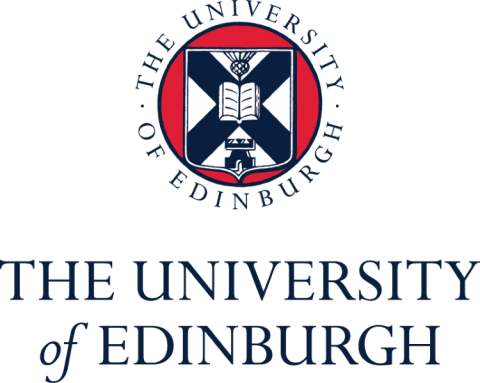
You may also like

Popular resources
.css-1txxx8u{overflow:hidden;max-height:81px;text-indent:0px;} Students using generative AI to write essays isn't a crisis
How students’ genai skills affect assignment instructions, turn individual wins into team achievements in group work, access and equity: two crucial aspects of applied learning, emotions and learning: what role do emotions play in how and why students learn.
The purpose of an academic CV might seem obvious in that it’s used for job applications and it’s a document that every researcher has. However, the trick to an effective CV is keeping it up to date with recent achievements and presenting a picture relevant to the role to which you are applying. A well-presented CV can be the difference between securing that all-important interview, or not.
Writing an academic CV is not a quick exercise. Certainly not if you intend to sell yourself as the ideal candidate. Every time you apply for a job you need to tailor your CV for that specific role. Don’t undersell yourself by presenting a generic CV that will call into question your suitability and motivation for the job in question through lack of detail. Instead practise the art of decoding the job description and person specification. This means going through these documents with a fine toothcomb, ideally armed with a highlighter too, and identifying the key skills and experience sought. You should also be able to get a feel for the employers’ preference and the order of importance of these skills. Once you’ve identified what the employer is looking for, you can make sure that these key skills and experiences are evidenced within the first two pages of your CV – remember presenting the most relevant experience first is key to capturing the recruiter’s interest.
- Academic writing resources
- You can have it all, just not all at once
- ECRs can still evidence leadership and management skills on their CVs
What to do:
Focus on ensuring that pages one and two have the most important information relevant to the role such as skills and experience. This might mean swapping the order of your sections around each time that you make a new application.
Use bullet points to describe your experience and highlight its relevance and wider impact. A strong bullet point starts with an active verb and covers a key achievement and the skills that you used to do so. It shouldn’t be longer than four lines of text.
Use facts and figures wherever possible to back up your level of responsibility and to help quantify your achievements. For example, include a brief section highlighting the number of publications and any notable articles but leave the full “Publication section” until later.
Proofread for mistakes and grammatical errors as high standards are expected. Better still, get a colleague or friend to proofread it too.
Do ensure that the CV has a clear structure. Key sections often include Research, Teaching, Funding & Awards, Publications, Administration and Public engagement/Wider impact. It must be well formatted and with a minimum font size of 11 points. It won’t get read if the recruiter finds it too difficult to pick out the key information – keep it simple and professional, no party tricks.
Do keep your objective or personal profile brief, if you choose to have one. These can do an excellent job of selling you if written well. Too much detail and they lose their impact.
Do upload your CV as a pdf when submitting it. This ensures more reliable formatting should the CV be printed off as well as being read on screen.
What not to do:
Do not write “Curriculum Vitae” at the top of the document, it should be obvious from the layout what the document is. Instead use your name as the header.
Don’t include your date of birth (DOB) when applying for academic roles within the UK as this information is not needed (check local preferences when making applications outside of the UK).
Don’t include lists of information without making it relevant to the role – ie, don’t give lists of courses with no description of what they are.
Don’t assume that a publication list means that you don’t need to provide any detail on your research. Research is one of the key sections of an academic CV.
Don’t undersell yourself by not including corresponding evidence and facts and figures.
Don’t make it too long. The average length for researchers at an early stage of their career is four to five pages.
Don’t forget about the covering letter. It is rare that a CV would be a stand-alone document.
Don’t forget to brief your referees. If you have given your referees the details of the role that you are applying for, they will be able to write a better reference.
Targeting your applications will make the difference
The takeaway message is put the most important things first and make a match between the skills that you have and what the role is asking for. Don’t waste space and time giving unnecessary detail. Remember that not every academic position advertised is the same so do your research. Consider what is the focus of the department and how your current research fits in as well as future research plans that you have to offer.
Eleanor Hennige is the research staff careers consultant based in the University of Edinburgh’s Institute for Academic Development.
If you found this interesting and want advice and insight from academics and university staff delivered direct to your inbox each week, sign up for the THE Campus newsletter .
Students using generative AI to write essays isn't a crisis
Eleven ways to support international students, indigenising teaching through traditional knowledge, seven exercises to use in your gender studies classes, rather than restrict the use of ai, embrace the challenge, how hard can it be testing ai detection tools.
Register for free
and unlock a host of features on the THE site
Explore Jobs
- Jobs Near Me
- Remote Jobs
- Full Time Jobs
- Part Time Jobs
- Entry Level Jobs
- Work From Home Jobs
Find Specific Jobs
- $15 Per Hour Jobs
- $20 Per Hour Jobs
- Hiring Immediately Jobs
- High School Jobs
- H1b Visa Jobs
Explore Careers
- Business And Financial
- Architecture And Engineering
- Computer And Mathematical
Explore Professions
- What They Do
- Certifications
- Demographics
Best Companies
- Health Care
- Fortune 500
Explore Companies
- CEO And Executies
- Resume Builder
- Career Advice
- Explore Majors
- Questions And Answers
- Interview Questions
How To Write A Resume In 7 Steps (With Examples)
- How To Write A Resume
- Resume Skills Section
- Resume Objective Section
- Career Objective Section
- Resume Reference Section
- Resume Summary Section
- Resume Summary Example
- Resume Interests Section
- Address On Resume
- Relevant Work Experience
- Anticipated Graduation Date On Resume
- Education Section On Resume
- Contact Information On Resume
- Statement Of Qualifications
- How To List Publications On Resume
- Accomplishments On Resumes
- Awards On Resume
- Dean's List On Resume
- Study Abroad On Resume
Resumes are still the most important document in your job search . Generating a professional and interesting resume isn’t easy, but there is a standard set of guidelines that you can follow. As hiring managers usually only spend a short time looking over each resume, you want to make sure that yours has a reason for them to keep reading.
If you’re looking to write a resume, rewrite a resume you already have, or are just curious about resume format, then you’ve come to the right place. This article will go through the steps to writing an excellent resume, as well as offering examples for what sections of the resume should look like.
Key Takeaways:
A resume is a short document that details your professional history in a way that tailors your experience and skill set for the particular job you’re applying for.
Resumes follow a few standard formatting practices, which hiring managers and recruiters expect to see.
Highlighting your work experience, skills, and educational background with relevant keywords can help you get past applicant tracking systems and into more interviews.

How to write a resume
Writing a resume involves using the proper formatting, writing an introduction, and adding your work experience and education. Stuffing your entire professional life into a single page resume can feel overwhelming, but remember that you’re distilling the relevant parts of your professional experience in order to catch the eye of the recruiter .
Formatting your resume. To start, use a word processor such as Microsoft Word or Google docs. Standard resume formatting calls for:
1 inch margins
10-12 point font
A professional, commonly-used font
Additionally, there are three resume formats that are commonly used. Most people should stick with a chronological resume format , but the combination resume format and functional resume format can be effective for more advanced workers or those who have significant gaps in their resume.
Write a resume header . It doesn’t matter if you have the best resume in the world if the hiring manager can’t contact you. Every single resume should include the following contact information:
Your full name. First and last.
Your phone number. Use a personal phone number, and make sure your voicemail is set up properly.
Your email address. Nothing inappropriate — [email protected] is a safe choice.
Location. City, State, Zip Code is fine, but you can include your full mailing address if you think it’s appropriate.
Your social media (optional). LinkedIn is the obvious one you’d want to include, but make sure your profile looks good. If you have an online portfolio , either on a personal blog/website or on a site like Journo Portfolio , feel free to include that here as well.
Your job title. Also optional, but can be useful for applicant tracking systems.
Resume introduction. You have four options for your resume introduction: a resume objective, summary statement, resume profile, or qualifications summary. For most job-seekers, a resume summary statement is the best choice. Regardless of which resume introduction you choose, avoid first-person pronouns (I/me/my).
Resume objective. A resume objective is the goal of your resume. Since the objective of every resume is to land a job, this is not the most original or impressive opener you can have.
On the other hand, it’s a good choice for an entry-level applicant or someone who is changing career paths . This should be a 1-3 sentence summary of why you’re motivated to get the position you’re applying for.
Who should use a resume objective: Entry-level applicants, career-changers, and recent college graduates.
Resume summary. This is the best opener for most job-seekers. As the name suggests, a resume summary highlights the most salient aspects of your resume.
It should include your current position, how many years of experience you have, some of your biggest achievements, and possibly your career goals. This should be a 1-3 sentence spiel and should include some quantifiable experiences.
Who should use a resume summary: Most job seekers; anyone with quantifiable accomplishments to emphasize and a broad range of skills.
Qualifications summary. A bullet point list (4-6 points is the sweet spot) of your qualifications for the position. It’s best used by applicants going for jobs that require a fixed skill set. It’s not a great choice for entry-level applicants who lack quantifiable achievements.
You’ll notice that a qualifications summary takes up more space than a resume objective or summary, but it can actually save the hiring manager time if you provide a bunch of valuable information right off the top.
Who should use a qualifications summary: Those applying to a job with requirements for certain skills and job-seekers who have a lot of experience in their industry and/or field.
Resume profile. A resume profile is similar to a resume summary, but goes into more detail about your accomplishments at your current or former job, while also telling the reader about your career goals. Think of a resume profile as a section that pulls all the best parts of your work experience section into one place.
Who should use a resume profile: Anyone with significant accomplishments under their belt, expertise in a niche field, or applying to a job in the same industry that they have lots of experience in.
Resume headline. Resume headlines aren’t necessary, but you can include one alongside any of the four types of resume introduction listed above. A resume headline comes between your contact information and the resume introduction of your choice.
Headlines can be used by entry-level applicants and experienced job-seekers alike. The important point is that your headline should be short and to the point. Additionally, you should use title case when writing your resume headline (capitalize words as you would for a book title).
Who should use a resume headline: Any job-seeker who wants to showcase their experience or unique value right off the bat.
Work experience. Your work experience section is the place to let hiring managers know that you have relevant experience that would allow you to handle the job you’re applying for.
If you’re using the chronological resume format, your work experience section would come after your resume summary/objective. In a funcitonal reumse, it would follow your skills section. Either way, work experience should be listed in reverse-chronological order (most recent experience at the top).
When listing your work experience, you should include all of the following information:
Job title. Start by stating the position you held at the company. These are easy cue for the hiring manager to look at and determine whether your past positions would help you succeed at their company.
Company Info. Include the name of the employer, the location where you worked, and perhaps a brief description of the company, if it isn’t a well-known name.
Dates Employed: Use the mm/yyyy format if you want to be sure that most applicant tracking systems (ATS) will pick it up. Whatever format you use for dates, be consistent, or your resume will look sloppy.
Job Description. Don’t just list your job’s responsibilities; hiring managers and recruiters already have an idea of your duties based on the job title. Instead, list your most important and impressive responsibilities/achievements at the job with bullet points. Determine which of these are most relevant for your new role based on the job description.
Ideally, each bullet should be no longer than a single line. However, two lines is acceptable, if used sparingly.
Always start with a strong action verb, followed by a quantifiable achievement and a specific duty. For example: “Developed ad campaigns for clients, increasing sales by an average of 27%.” Each job title should include 3-5 bullet points.
The order that you include this information can be changed around, as long as you are consistent throughout your resume. However, the bullet points detailing your job’s achievements should always be the last item for each entry.
It’s important that you tailor your resume’s work experience section to the job you’re applying for. We recommend reading the job description carefully and highlighting the action verbs in one color and the skills, adjectives, and job-specific nouns in a different color.
Educational background. In almost all cases, your education section should come after your professional history. If you’re a recent college graduate with limited work experience, you may choose to put your educational achievements first.
Like the section on your professional history, educational experiences should come in reverse-chronological order, with your highest level of education at the top. If you have a college degree, you don’t need to add any information about your high school experience. If you didn’t finish college, it’s okay to give a list of what credits you did complete.
Each educational experience can be listed in the following format:
Degree/Program Name College/University Name Dates attended
You don’t need to add anything else, especially if your resume is already impressive enough. But if you’re struggling to fill up the page, or you feel that aspects of your educational experience will help make you a standout, you may consider also including:
Minor. If you think it rounds out your not-exactly-relevant-to-the-job major nicely.
GPA. Only if it was 3.5 or higher. Otherwise, it’s not going to do you any favors to include this.
Honors. Dean’s List, Cum Laude, etc.
Achievements. If you wrote a killer thesis/dissertation that showcases intimate knowledge relevant to the job to which you’re applying, you can include its title and a very brief description.
Extracurricular activities. Only include if they’re relevant. For example, if you’re applying for a management position and you were president of your student government.
Certifications/Licenses. If the job you’re applying for requires/likes to see certain certifications or licenses that you have, you may include them in this section as well.
Skills section. Your impressive skills should be scattered logistically throughout your professional history section, but you should also include a section solely dedicated to highlighting your skill set . Skills can be broken down into two categories:
Hard skills are skills you learn through training and indicate expertise with a technical ability or job-specific responsibility.
Soft skills are your personality traits, interpersonal abilities, and intangible qualities that make you more effective at your job.
Your resume should have a healthy mix of hard and soft skills, as both are essential to job performance. However, since soft skills are harder to prove in the context of a resume, we recommend leaning more toward hard skills. Additionally, whenever you list a soft skill, make sure that it has a correlating item in your work experience section.
For example, if you say you are skilled in collaboration, you should mention a time when a team project was a major success somewhere in your work experience section.
Optional sections. If you still have space left or there’s more you want to show off that doesn’t quite fit in any of the above sections, you may consider adding an additional section covering one or more of the below categories:
Language . Being bilingual is always impressive, and can be included on a resume for any company. Highlight this more if your position involves liaising with international distributors and/or clients. Don’t lie about your proficiency level.
It may be best to not mention it if you’re not particularly proficient speaker . Such as if you took courses in school, or haven’t really managed to gain fluency. It can end up looking like an attempt to inflate your credentials, which you want to avoid.
Volunteer experience . Always a good thing to include. It shows you’re a team player who behaves in a way that promotes the greater good, without thought of personal gain. Especially good for entry-level candidates and those applying for jobs at a non-profit. If you have gaps in your work history, you can also consider including volunteer experiences in your work history section instead.
Personal projects. A personal blog, published works, or a portfolio of your past projects are all good things to include. They show you take initiative, enjoy and take pride in your work, and that you can handle the responsibilities of the job, if relevant.
Certifications/licenses. If you didn’t include these in your education section, this is another good place to list relevant certifications or licenses that you have.
Interests . This is largely just a space filler if your resume is light in other areas. However, if your hobbies are directly related to the job that you’re applying for, it’s not a bad idea to include them. And it might draw a recruiter’s attention if you end up sharing some of the same interests as they do.
If you have several seemingly random items that are valuable, but don’t warrant creating a whole separate section for, you can also make a section called “Additional Experience.” Here you can include all of the above categories in one place. Just make sure that each item is clear and easy for readers to understand.
Resume samples
Now that we have a good idea of how to write a resume, let’s take a look at some example resumes:

Jack Pilgrim Washington , DC 14015 – (555) 444-3333 – [email protected] – www.linkedin.com/jpilgrim Resume Summary Graphic designer with 3+ years of experience creating and implementing promotional materials and social media graphics. Worked with sales and marketing teams to increase inbound calls by 23% YoY through compelling digital media. Adept at planning, managing, and prioritizing multiple deadlines at once, and thrives in fast-paced work environment. Work Experience Creative Designs | Washington, DC Lead Graphic Designer | June 2018-Present Worked with sales and marketing teams to create landing pages, sales proposals, and supporting media elements to drive sales by over $250,000 per quarter Trained, managed, and mentored team of 4 junior designers to fulfill 40+ project orders on a weekly basis Conducted UX research through surveys, usability testing, and data analysis to plan content marketing strategy, driving organic search traffic by 12% Presented proposals, results, and status updates to set of 4-7 clients, ensuring customer satisfaction at or above 95% for 3 years straight Happy Place | Alexandria, VA Junior Graphic Designer | July 2016-May 2018 Translated client needs and branding strategies into design and content strategy, increasing client retention by 22% Reduced project turnaround time by 8% by Utilizing web-based ticket system for completing and archiving finalized pieces Posted digital artwork to network IPTV using web interface to produce high-end info-graphics and other materials Happy Place | Alexandria, VA Marketing Intern | September 2015-July 2016 Assisted marketing team with data collection, analysis, and presentation using Google Analytics Drew up storyboards for new marketing campaigns alongside sales team, increasing brand awareness through social media Wrote 500-1000 word articles to pair with graphical elements on page, leading to a 40% boost in engagement on company website Education Savannah College of Art and Design | Savannah, Georgia May 2016 Bachelor of Fine Arts in Graphic Design Skills Adobe Creative Suite Typography HTML/CSS WordPress Collaboration Organization
Allison Neederly Chicago, Illinois , 60007 | (333) 222-1111 | [email protected] | www.linkedin.com/allison.neederly Resume Summary Dedicated customer service representative with 4+ years experience resolving customers’ needs in-person, online, and over the phone. Top achiever at XYZ Inc. with a 100% customer satisfaction rate for Q1 of 2020. Friendly personable, and knowledgable about company’s products and services. Relevant Skills Customer Service Responded to upwards of 200 customer queries daily with XYZ Inc., reducing the average wait time by 56% and increasing customer satisfaction rates by 13% Ability to resolve conflict and create a positive atmosphere for shopping for both new and existing customers through technical proficiency Expert product knowledge and communication skills, and experience training and mentoring new customer service staff Web Chat and Phone Skilled in 3 web chat platforms for helping online customers resolve their queries quickly and accurately Achieved fastest call resolution rate at XYZ Inc., with an average resolution time of under 5 minutes per customer Performed outbound calls for customer satisfaction surveys, as well as writing web-based surveys for 10,000+ customers Troubleshooting Detailed product knowledge allowed for customer technical issues to be resolved at rate within top 5% of all customer service associates at XYZ Inc. Created manual for step-by-step directions for troubleshooting that was implemented for team of 100+ customer service reps Positive attitude took average tech-related negative response from 1/5 stars to 4/5 stars, increasing trust in brands and services Work Experience XYZ Inc. | Philadelphia, PA Customer Service Associate New Look Global | Burlington, VT Junior Customer Service Representative L.L. Bean | Burlington, VT Sales Associate Education University of Vermont | Burlington, VT May 2012 Bachelor of Arts in Humanities
Priya Laghari New York, NY | (222) 111-0000 | [email protected] | www.priyabizdev.com Resume Profile Strategy Development: Grew John Deere’s international sales by 13% by tapping into undeserved countries in Southeast Asia Management: Oversaw a team of managers representing marketing, sales, and product teams. Streamlined collaborative, cross-functional communications through agile and scrum management system CRM: Developed, customized, and implemented new customer relationship management database for accounts totaling over $10M in value Work Experience Business Development Manager 01/2015-Present Microsoft | Redmond, WA Developed product strategies and roadmap for Google AdWords, increasing inbound traffic by 26% YoY Reduced time training on new software by 50% for new and existing employees by implement e-learning programs Spearheaded digital marketing campaign worth $1M that saw a return of 200% in first year by qualifying leads earlier in the sales funnel Regional Sales Manager 11/2012-01/2015 Big Things Inc. | St. Louis, MO Managed territory encompassing 29 regional locations with an annual revenue of approx. $55M Worked with C-level executives to plan business strategies, resulting in 20% reduction in overhead costs Increased client retention by 12% in first year by implementing a CRM approach based on account profiling and elevating levels of relationship selling Account Manager 02/2009-11/2012 Solutions Corp. | Chicago, IL Implemented and developed CRM strategic plans, increasing retention of long-term clients by 22% Maintained 50+ accounts totaling over $35M in value Generated leads through one-on-one consultation via phone inquiries, online check-ins, and meeting office walk-ins Relevant Skills CRM: Proficient with Salesforce, Zoho, and HubSpot; some experience with Keap. Used various CRM software over a decade to successfully manage customer relations and quick to adapt to new software and tools that aid in quality of customer experience. Salesmanship: Negotiated and closed over several deals worth $1M+ and skilled in upselling and cross-selling. Adept at working closely with marketing and product teams to maximize the efficiency of the sales funnel for both inbound and outbound traffic. Presentation: Represented Microsoft Northwest Region at quarterly board meetings, ensuring all stakeholders were kept abreast of new developments and opportunities. Also deliver monthly presentations to big clients and vendors to maintain positive relationship. Data analytics. Expert at integrating data from various analytics platforms, including Google, Microsoft Power BI, and SAP BusinessObjects Education Colgate University | May 2008 MBA Fordham University | May 2006 Bachelor’s Degree in Business
For more resume examples and templates:
Resume examples by job
Google docs resume template
Resume templates
Resume builder
Resume Headers Samples:

Tip : Never put your contact info in the header of your document; some applicant tracking systems might miss it.
For more on how to write a resume header:
Resume Header
Resume Titles
Resume introduction examples
Entry-Level Resume Objective.
Recent graduate with a bachelor’s in Marketing from the University of Virginia seeking an entry-level role in content marketing. Excellent copywriter with 2+ years experience editing content as a member of the UVa Writing Center.
Career Change Resume Objective.
Eager to apply 7+ years of experience with customer success management to make successful outbound B2B calls, deliver customized business solutions to new and existing customers, and provide expert product knowledge in the role of Account Manager for XYZ Inc.
Example Resume Summary Statement.
Accountant with over 8 years of experience in the medical industry. Adept at advising on management of cash deficits, reconciling departmental accounts, and creating new accounts and codes. Coordinated invoice preparation system for ABC that reduced contractor overhead by 19% YoY.
English teacher with a love of language and 6 years of experience teaching high school students. Developed new curriculum that boosted freshman reading comprehension scores by 12% and created after school book club for AP Lit class, resulting in 100% of participating students achieving a 5 on the AP Lit test.
Example Qualifications Summary.
Executive assistant with 5+ years experience helping maintain efficiency in an office of 25 employees Communicated directly with internal and external stakeholders, helping Senior Vice President manage projects worth $5M+ Proactively managed office schedules, identifying and prioritizing changes to ensure client satisfaction Recognized in a company of 500 for “Outstanding Achiever” in May 2019
Example Resume Profile.
Detail-oriented IT Specialist with 4 years of experience overseeing and improving the infrastructure of IT systems. Adept at building and running troubleshooting systems and testing services. Decreased security risk by 47% through continual optimization, while also improving the speed of client portal by 22%. Excellent communicator both internally and for client-facing discussions. Achieved 98%+ customer satisfaction ratings through weekly and monthly check-ins with accounts valued cumulatively at $500,000.
Entry-Level Resume Headline.
Bilingual College Graduate with 80 WPM Typing Speed and Tutoring Experience
Experienced Resume Headline.
Business Development Specialist with 6+ Years Experience Scaling Start-Up Tech Teams
For more on resume introductions:
Resume objective statement
Resume summary statement
Resume summary statement examples
Qualifications summary
Sample resume work experience sections

Work Experience XYZ Industries | Seattle, WA Marketing Associate | May 2019-Present Delivered weekly presentations to client-base to communicate brand messaging, increasing client retention by 11% Served as liaison between marketing and product teams, resulting in projects finishing 2 weeks early, on average Leveraged Excel skills to create and maintain spreadsheet to track consumer insights, emergent trends, and inform decisions of marketing team through competitive analysis Managed team of 5 contractors to juggle multiple priority projects simultaneously, never missing a deadline Initiated an affiliate referral program that PR team went on to turn into a revenue-generating stream valued at $30,000 annually ABC Corp | Seattle, WA Marketing Intern | September 2018-May 2019 Developed, maintained, and processed 20+ digital consent forms and distributor forms Worked collaboratively with a team of 10 marketing professionals, closely aligning our goals with the PR team Provided data analysis using Google Analytics and performed keyword research to increase blog traffic by 56% over six months Answered up to 50 customer queries by phone and email each week
For more on building the perfect resume work experience section:
Resume work experience section
First resume (no experience)
Examples Of Education Resume Sections
Graduated recently from a 4-year program.
Western Illinois University | Macomb, Illinois May 2020 Bachelor of Arts in Sociology | Minor in Psychology 3.95 GPA magna cum laude Dean’s List all semesters
Two degrees.
Fordham University | Bronx, New York April 2016 Master of Chemical Engineering Stony Brook University | Stony Brook, New York April 2014 Bachelor of Science in Chemistry
Anticipated graduation date (not yet graduated).
DePaul Univeristy | Chicago, Illinois Bachelor of Arts in History – Degree anticipated May 2021 Current GPA: 3.8
Older job seeker (graduated 10+ years ago).
University of Chicago | Chicago, Illinois Bachelor of Business Administration
High school graduate (no college degree).
Johnston High School 2016-2020 Head of Computer Club
More on crafting the perfect resume education section:
Education resume section
GPA on resume
Dean’s list
Magna cum laude
Examples Of Skills For Resume
Examples of hard skills include:
Examples of soft skills include:
Here’s more information on how to incorporate skills into your resume:
Resume skills section
Hard skills
Soft skills
Top skills for professionals
Skills-based resume
Resume writing FAQ
What is a resume?
A resume is a one to two-page document that focuses on professional experience, past achievements, education and certifications, and specific skills tailored to the job you’re applying for.
Almost every job application requires a resume, and hiring managers use them as a first impression in determining which applicants get a shot at an interview.
Whether you’re fresh out of college or have 30 years of professional experience, this guide should help craft a resume that stands out from the crowd and get you one step closer to landing your dream job.
What is the format for writing a good resume?
Most people will want to use a chronological or reverse-chronological resume format. This format is compatible with most applicant tracking systems (ATS) and is easy for employers to read. Additionally it helps highlight your experience, which helps prove your qualifications.
How far back should a resume go?
A resume should go back no further than 10 to 15 years. However, it is important that all your information is relevant. Therefore, do not include job experience that is irrelevant to your application, even if it’s fewer than 10 years old. Save that information for later discussions.
Should you personalize your resume for each job?
Yes, you should personalize your resume for each job you apply to. Many recruiters use ATS now, which will search for keywords in a resume and reject those that don’t have them. That means that the skills you choose to highlight as well as your opening, such as your resume summary, should be altered to suit each job you apply to.
You don’t need to rewrite the entire resume for each job, but it does show attention to detail and initiative to make sure that your resume is customized. It also makes it more likely that you’ll get past the first step of the process.
State of New York Department of Labor – Resumes, Cover Letters and Job Applications
Harvard University – Create a Resume/CV or Cover Letter
How useful was this post?
Click on a star to rate it!
Average rating / 5. Vote count:
No votes so far! Be the first to rate this post.

Matthew Zane is the lead editor of Zippia's How To Get A Job Guides. He is a teacher, writer, and world-traveler that wants to help people at every stage of the career life cycle. He completed his masters in American Literature from Trinity College Dublin and BA in English from the University of Connecticut.
Recent Job Searches
- Registered Nurse Jobs Resume Location
- Truck Driver Jobs Resume Location
- Call Center Representative Jobs Resume Location
- Customer Service Representative Jobs Resume
- Delivery Driver Jobs Resume Location
- Warehouse Worker Jobs Resume Location
- Account Executive Jobs Resume Location
- Sales Associate Jobs Resume Location
- Licensed Practical Nurse Jobs Resume Location
- Company Driver Jobs Resume
Related posts

How To Write The Perfect Resume Header (With Examples)

Irrelevant Experience: Should I Include It On A Resume?

How To Create An Infographic Resume (With Examples)
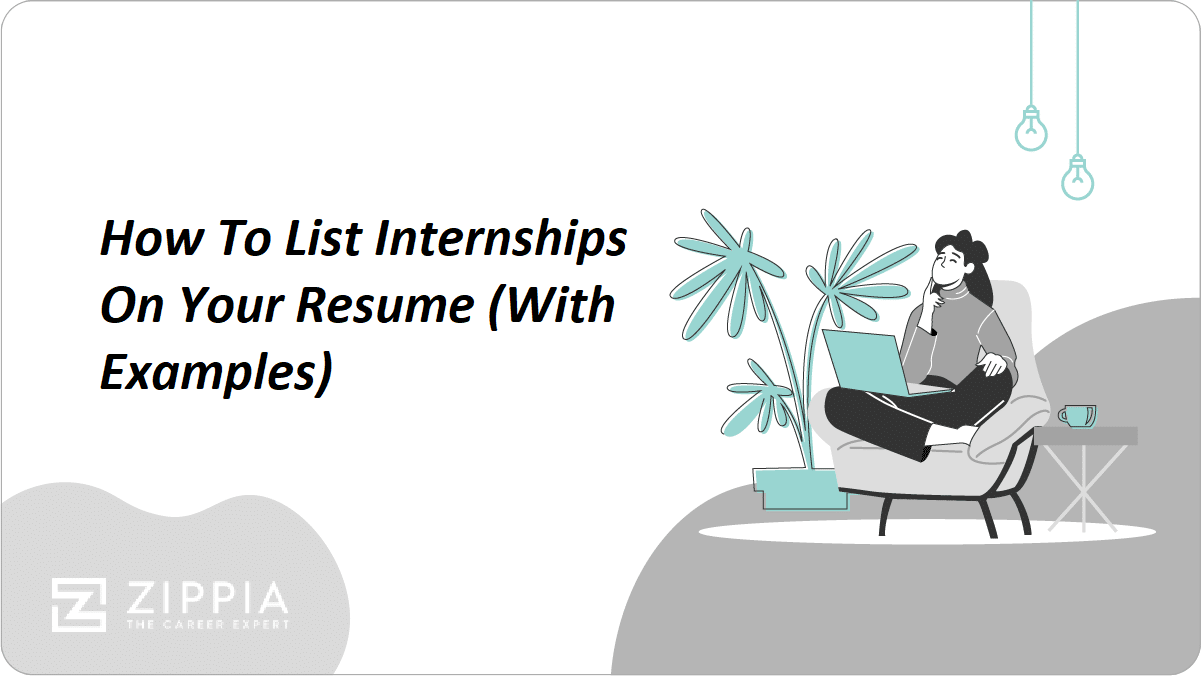
How To List Internships On Your Resume (With Examples)
- Career Advice >
- Resume Structure >
- Parts Of A Resume >

About Features Online Exclusives From the President Career Consultation Knowledge Share Explore

Workplace Wellness in Clients with Disabilities
Five strategies counselors can use to help clients with disabilities overcome employment challenges and improve workplace wellness.

A Year of Growth

Path to Discovery

How an Associate Counselor Can Target Clientele

Choose Your Own Adventure

Bridging the Gap
MORE FROM THIS ISSUE
Online Exclusives
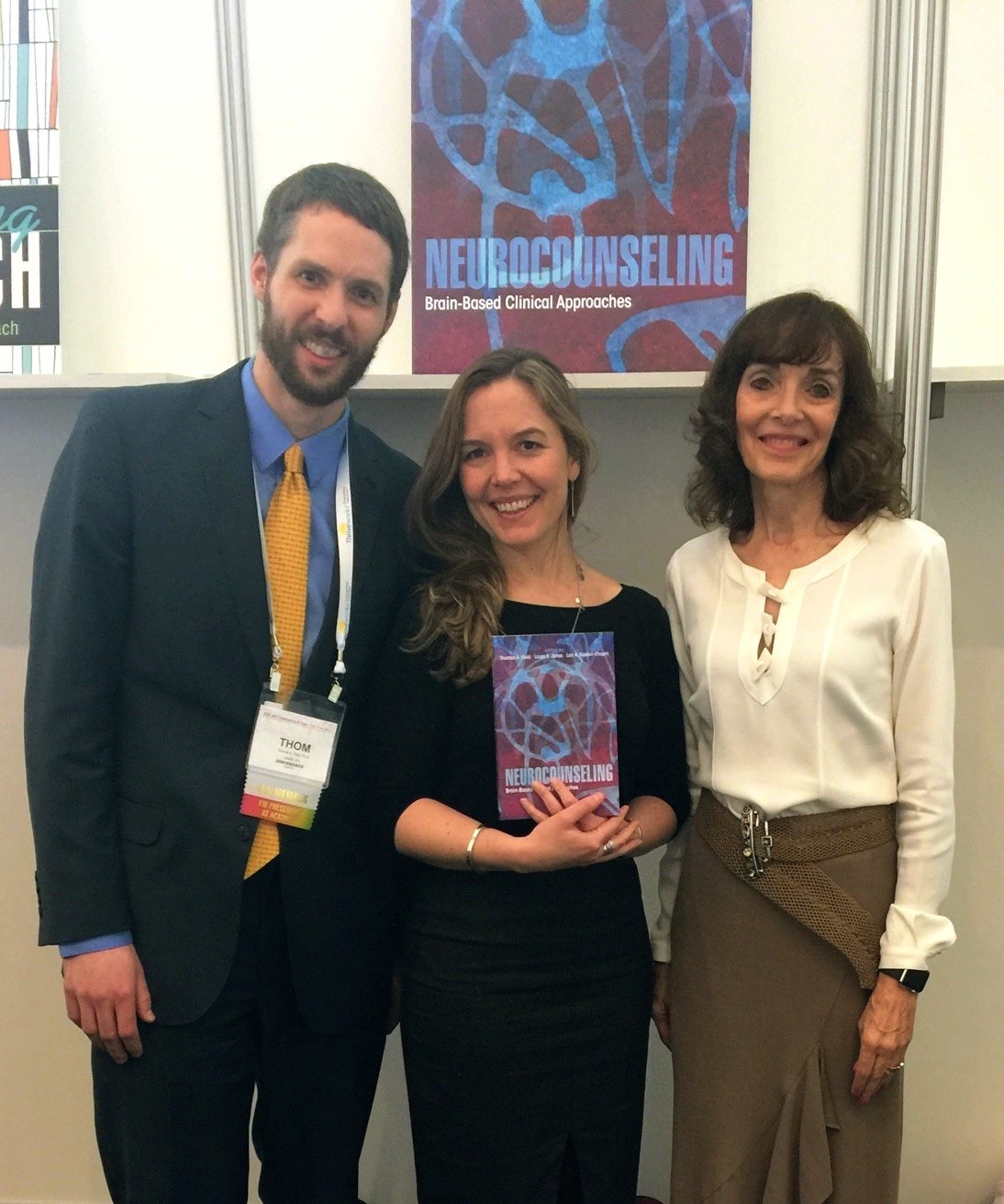
The editors of Neuroscience Informed Counseling discuss what it means to be a neuroscience-informed counselor.
- Counseling Specialties & Workplace Settings
- Professional Development
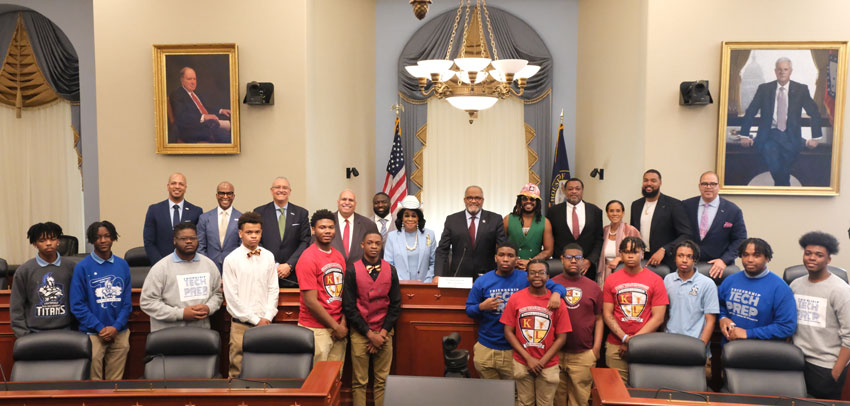
ACA CEO Shawn Boynes, FASAE, CAE, and other mental health leaders testified before Congress on the need for innovative solutions, better representation and pay, and collaboration to improve the mental well-being of Black men and boys
- Cultural Responsiveness
- General Public
- Professional Counseling

The authors of the DSM-5-TR Learning Companion for Counselors discuss how their book can help counselors better understand and implement recent changes to the DSM in their clinical practice.
- Assessment, Diagnosis & Treatment
- Diagnostic / Assessment Tools
Explore More Online Exclusives
Counseling Today Blog
By Laura Smestad, PhD, LMHC
.jpg?sfvrsn=273d45d0_1)
Here are some ways to gain professional experience as a graduate student that will help you craft a stronger CV:
- Pursue teaching assistant opportunities. Being a teaching assistant is a great way to start adding teaching experience to your CV. At the graduate level, instructors will often allow doctoral student teaching assistants to co-teach the class or facilitate some class sessions independently. This also allows you to build stronger connections with faculty members. (As a bonus, they may even be willing to serve as a reference when you apply for a teaching position in the future!) Reach out to your doctoral program directors or instructors to see if they can help place you in a master’s-level class as a teaching assistant.
- Volunteer your time. Professional service is a fulfilling way to give back to the counseling profession, and it can provide opportunities for growth as well. You can apply to serve on various graduate student committees (like ACA’s) or get involved in Chi Sigma Iota, either at the national level or through your local chapter. Volunteering can sometimes lead to leadership roles within organizations, which can also benefit your CV.
- Explore fellowship opportunities at your university or professional organizations. Many counselor education and supervision programs offer fellowships to their students in areas such as research, leadership and advocacy. Being a fellow allows students the opportunity to be mentored by faculty members who have expertise in areas that align with the student’s career goals. The Counselor Education and Supervision journal also offers editorial fellowship positions for doctoral students, which is another opportunity to add research experience to your CV. Additionally, the National Board for Certified Counselors offers scholarships through the Minority Fellowship Program . Even if you are not awarded a fellowship, you can still reach out to professors at your university to see if anyone needs a research assistant to help with any of their current projects.
- Offer to guest lecture. If you have an area of expertise, connect with faculty members and offer to guest lecture in one of their courses. This is another way to add teaching experience to your CV and forge connections with professors. For example, during my first year as a counseling graduate student, I emailed the instructors teaching the psychopathology course the upcoming quarter to see if they were interested in having me lecture on obsessive-compulsive disorder, which is my focus area as a clinician. As a result, I have done a significant amount of guest lecturing because I have found instructors are eager to have someone with expertise come talk to their class. This was also a great way for me to meet professors whom I otherwise may not have encountered as a doctoral student.
- Apply for leadership opportunities. There are many leadership opportunities in the field, especially for doctoral students. Each region of the Association for Counselor Education and Supervision (e.g., Western ACES, Southern ACES) typically has an emerging leaders program that is designed for graduate students who want to pursue leadership opportunities, and these programs provide mentoring opportunities as well as guest speakers. You can join these organizations’ email lists and learn more about their leadership programs. Local counseling organizations also typically look for new committee leaders. There may even be leadership opportunities available at your own university!
Finally, remember that you don’t have to gain these professional experiences all at once. You can space out these opportunities throughout your doctoral program, especially if you start early. If you slowly take advantage of opportunities, then you will have a competitive CV by the time you graduate!
- Career Development
Search CT Articles
Current Issue
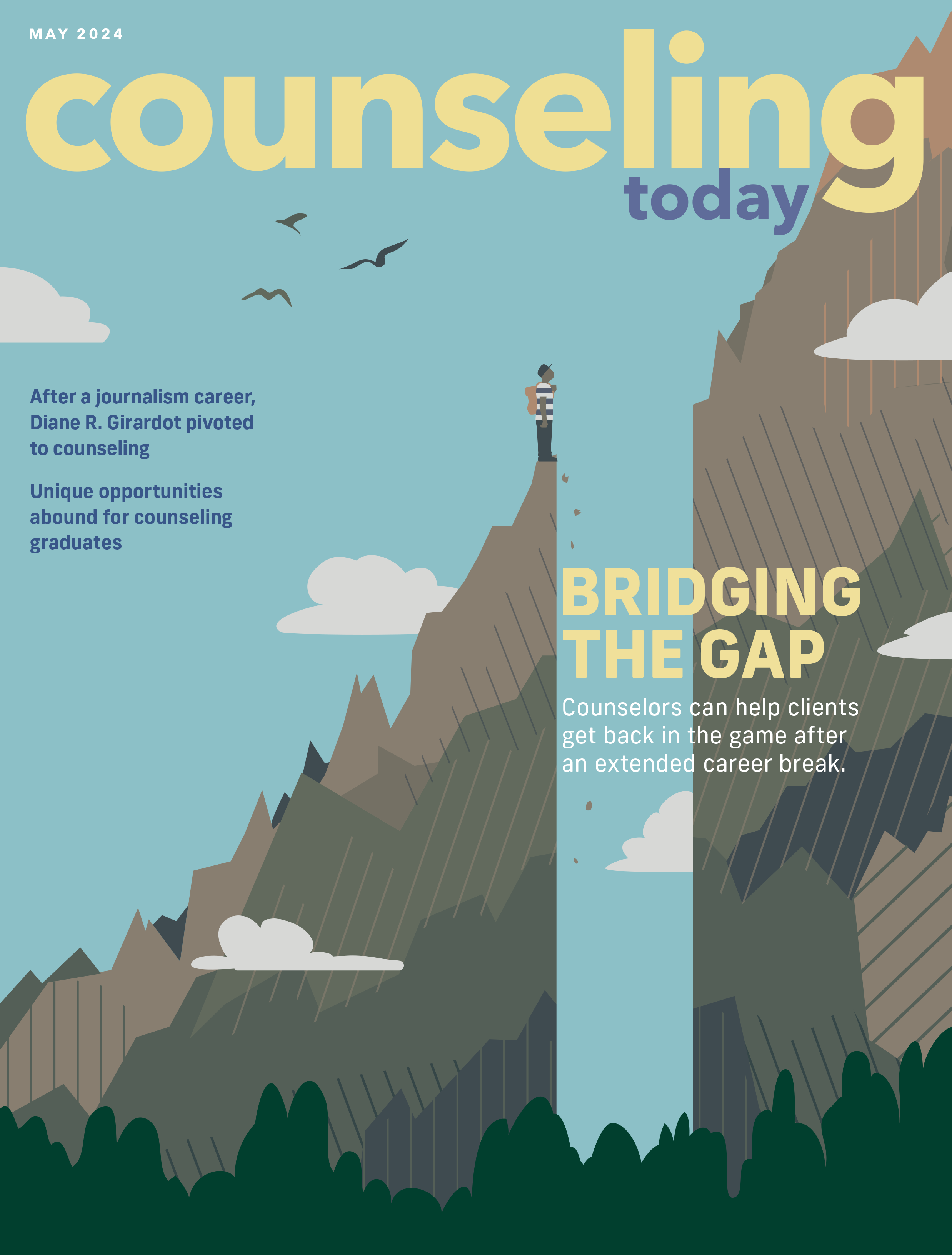
Editor's Picks
- Diversification and Burnout Prevention for Counselors
- Treating anxiety in children
- A closer look at the mental health provider shortage
- Generational trauma: Uncovering and interrupting the cycle
- Making every moment of clinical supervision count
-250x250-ad-3-20-24-kdf.png?sfvrsn=a0e044d0_1)
Share Your Thoughts
Online Readers Survey
Sign Up for Updates
Keep up to date on the latest in counseling practice. Sign up to receive email updates from Counseling Today .
CT on YouTube
Download Recent Issues
ACA members receive access to past full issues of Counseling Today . Log in to download copies from the archive.
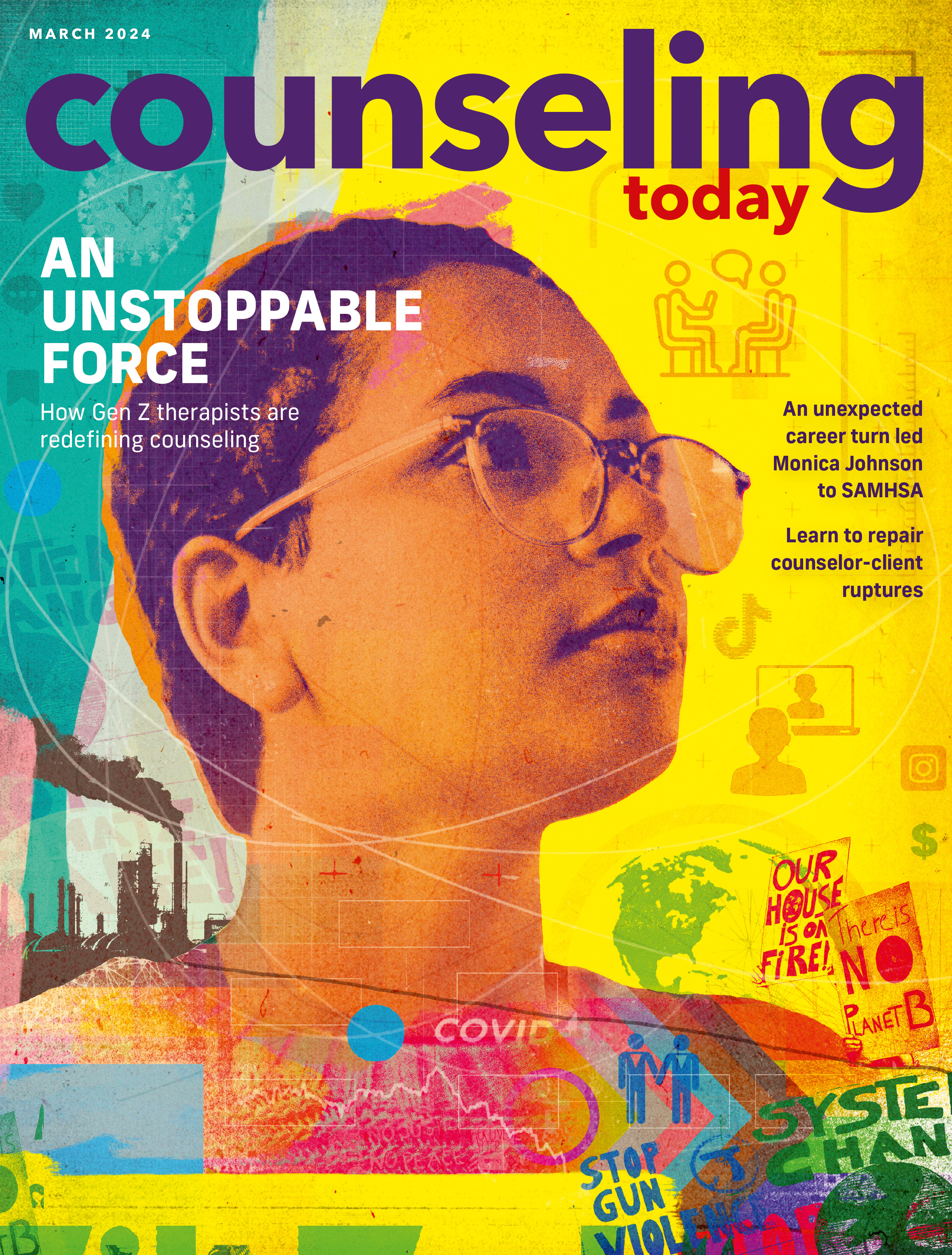
January 2024
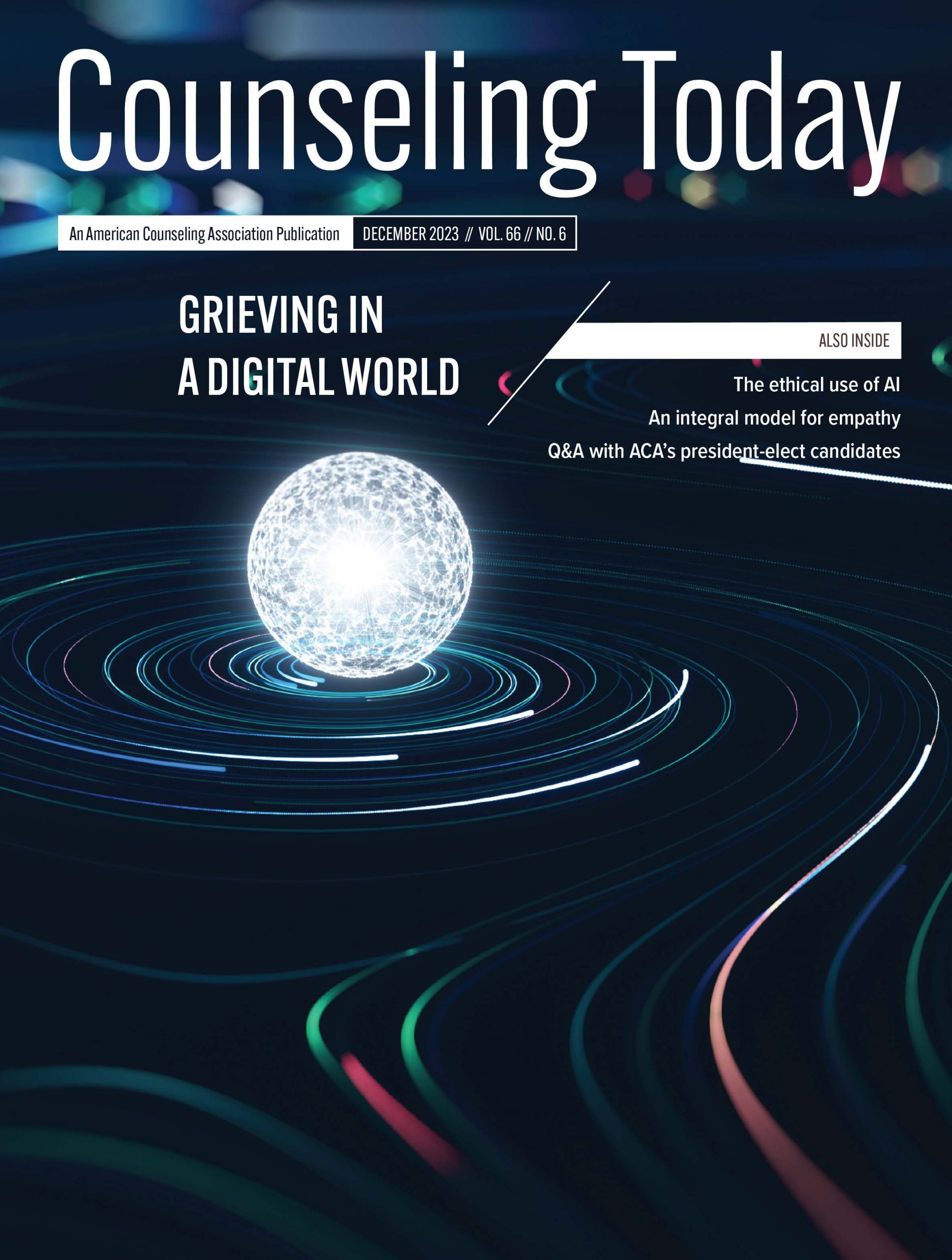
December 2023
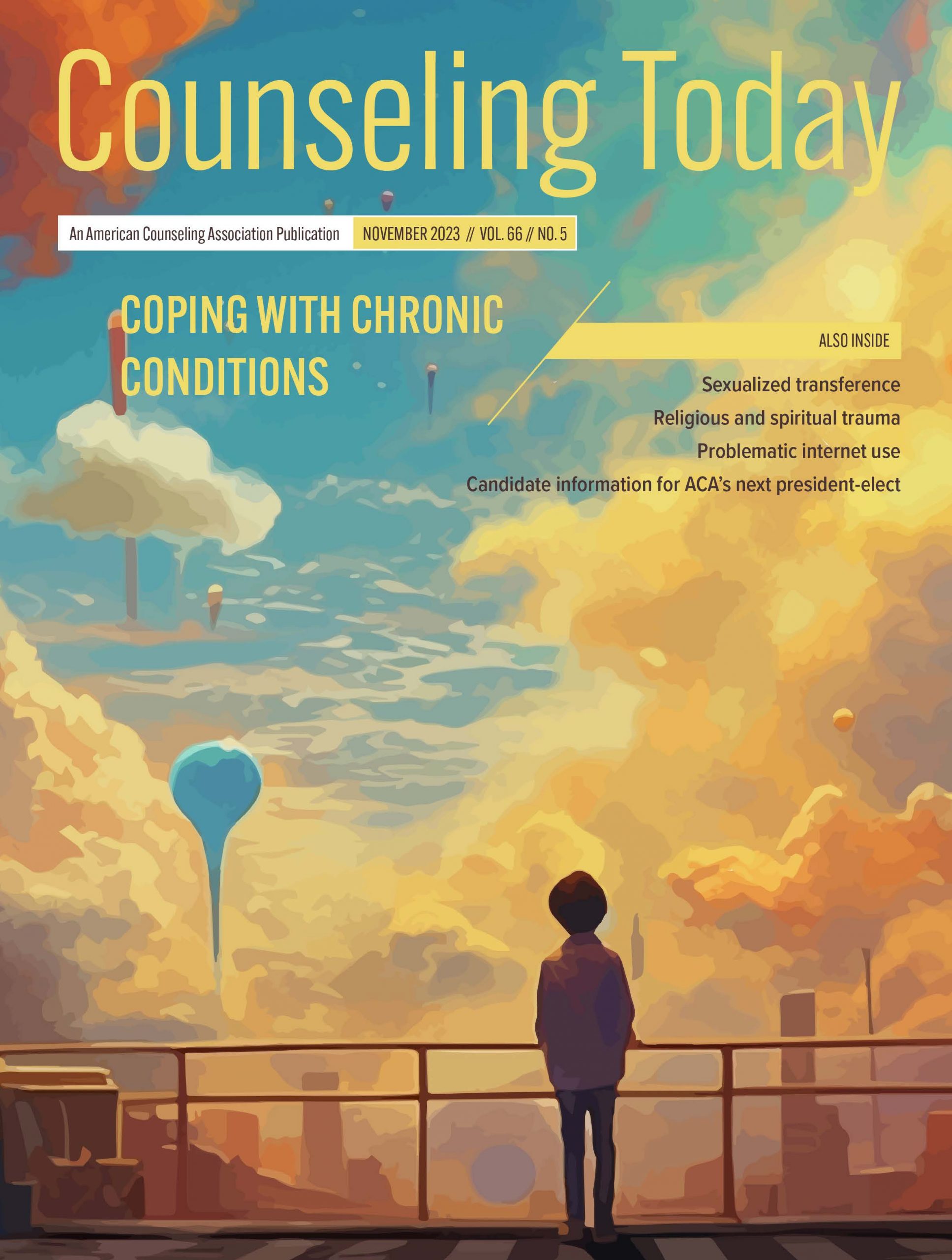
November 2023
VIEW RECENT ISSUES

2461 Eisenhower Avenue, Suite 300, Alexandria, Va. 22314 | 800-347-6647 | (fax) 800-473-2329
My ACA Join Now Contact Us Privacy Policy Terms of Use © All Rights Reserved.

What Is a CV and How Do You Write One?
Title: What Is a CV and How Do You Write One?
URL: /what-is-a-cv
Meta: Are you applying for a position requiring a CV? Continue reading for what to include, how to format it, and how to stand out.
So you are on a job hunt and looking for a new and exciting career. You have your resume ready when the hiring manager asks for your CV.
This causes you to panic because you have no idea what that is.
In today's job economy, job seekers must ensure they are prepared for any questions a prospective employer may ask them.
Continue reading for everything you need to know about what a CV is and how to write one.
What is a CV?
The term CV, Curriculum Vitae, is a Latin word meaning "course of life."
It is a document containing your academic credentials and previous work experience.
You typically don't require one unless you are applying to graduate school or have completed your master's or doctoral program and are now applying for an academic teaching or research position.
Related: These Tips can Help You Find the Right Job | Entrepreneur
What is the difference between a CV and a resume?
The key difference between a CV and a resume is that a resume is what you typically use when applying for a standard job application. A CV is used when applying for an academic program or teaching position.
The main point of a CV is to accurately depict any academic and research experience that you have acquired either through schooling, teaching experience or research and to provide this to potential recruiters.
This includes a detailed record of presentations and publications and tends to be longer and more detailed than a standard resume.
It is important to note that some employers use CV and resume interchangeably during job interviews.
This can be confusing, but the general rule of thumb is that if you apply for a position in academia , you will submit a CV.
If you are applying for a job outside of academia, you will provide them with your resume.
Related: 10 Tips For Writing An Impressive Resume | Entrepreneur
What should you include in your CV?
Now that you know the difference between a CV and a resume, what should you include in your CV?
Continue reading for everything a prospective employer, or a graduate program admissions committee, will look for in your CV.
Your personal information
Much like a typical resume, at the top of your CV, you can include the following contact information:
- Your full name.
- Your mailing address.
- The best phone number to reach you at.
- Your email address.
- Your date of birth.
Education section
CVs are mainly used to apply for positions in academia, so this section of your CV is crucial.
In this section, you can list the educational programs you attended, the years you attended them, and the name of the institution where you attended.
You may want to break this information down using bullet points or follow a CV template to make it easy to read.
Some prospective employers may require you to provide more in-depth information, such as your grades for your completed programs.
They then use this information to determine whether your educational background matches the position you are applying for.
Related: 5 Components of an Attention-Grabbing Resume | Entrepreneur
Work experience section
When you add your work history to your CV, you will want to list all your recent work experience and any fellowships or internships you were a part of that relate to the position you are applying for in reverse chronological order.
For each of your previous jobs, you can include:
- The name of your employer.
- The specific role you had, including your job title.
- How long you were employed at that specific job.
- A detailed job description.
- A list of any accomplishments or awards your employer awarded you.
Related: Not Enough Experience on Your Resume? Rise Above 'Requirements' | Entrepreneur
Any awards and honors you received
This is where you would include any awards or honors you have received while gaining professional experience at the academic level or during your previous employment.
These awards and honors may include:
- Dean awards you were awarded.
- Honorary degrees you received.
- Presidential awards you obtained.
- Professional certifications or awards.
- Any awards you received from an employer for excellence.
List your relevant skills
If you have acquired a specific set of skills pertinent to the position you are applying for and haven't yet mentioned them in your CV, you can list them here.
These skills may include, but aren't limited to:
- Language skills (such as being fluent in more than one language).
- Computer skills you have acquired.
- Advanced software skills you have obtained.
Related: 19 Best Skills to Put On a Resume That Employers Will Love | Entrepreneur
Your publications and presentations
If you were in school or working and published any academic or conference papers , you can list them here.
These include any papers that you wrote by yourself or co-wrote with other people as well as any papers that you helped contribute to.
You can include the following information regarding these published papers:
- The name of the paper that was published.
- The year it was published.
- The names of any co-authors, if applicable.
You can also include any papers you have written and presented at a conference or association. Here you may want to include the following:
- The name of the paper that was presented.
- The name of the conference that it was presented at.
- The date the paper was presented.
Related: Everything You Need to Know About Writing the Perfect Resume | Entrepreneur
Any professional associations you are a member of
If you are a member of any professional associations, you can list those here.
This section is typically only required when you are applying for a position such as an accountant, engineer, surveyor or IT professional.
You can list all the associations you have an affiliation with here, as well as the current status of your membership.
How do you format your CV?
Now that you know what to include in your CV, you must ensure it is appropriately formatted.
Here are some tips and things to remember regarding your CV format.
Build your brand
You want to build your brand and stay consistent throughout your CV.
This is accomplished using the same font and formatting throughout your application for a cohesive feel. This can include:
- Cover letter.
- Reference list.
- Research statement.
Emphasize only when necessary
Make sure only to use all capital letters, bold, underline and italics for the most critical information in your CV.
For example, you might want to bold the names of the schools you attended, especially if they are well-known, impressive institutions. But you wouldn't want to bold the dates you attended as this information isn't as important.
Separation is key
Separating dates from your other content using white space can make it easier for the reader to skim and take in the vital information.
You may even decide to line up all the dates on the right or left-hand side of the page to distinguish the more important parts for the reader.
Related: 13 Must-Have Words to Include In Your Resume | Entrepreneur
Make section headings easy to find
You can bold and use all capital letters to help distinguish your section headings and make them easier to find.
You can also strategically space them to help separate the different sections. This is typically done by entering two returns before a subheading and one return after.
Headers and footers
Having your name in a header or a footer on every page of your CV and other attached documentation is a good idea.
You may also want to include page numbers to ensure the pages don't get mixed up and out of order for the reader.
If you don't want a header or a footer on the first page of your CV, simply select "different first page" in the header/footer menu.
Listing your references
When listing your references, it is a good idea to include them on a separate page at the end of your CV.
You can list them one below the other or in two separate columns depending on the number of references you have and the look you are going for.
What is a personal statement?
Typically, admission committees also require you to provide a brief essay (anywhere from 500 to 2000 words) called a Personal Statement along with your CV. This is also known as a Statement of Interest or Purpose.
This is a crucial part of deciding whether or not you are a good fit for the job or program and also a good judge of your writing capabilities.
In general, what you may want to include in your Personal Statement includes:
- Your research and professional interests.
- What your future goals and career plan include.
- How their workplace or program helps meet these goals.
- What you will contribute to their organization.
Related: Use Your Personal Brand to Score Big at Job Interviews | Entrepreneur
How do you make your CV stand out?
There are a few things to remember to make your CV stand out from the rest .
Choose the proper format and font
Choosing the proper format and font can make a huge difference. You can't go wrong selecting a font such as Arial or Calibri for your CV.
Choosing a good, clean layout also helps you stand out and get noticed by potential recruiters.
Related: 8 Ways to Make Your Resume Stand Out From the Pack
Include a list of your soft skills
While a CV typically focuses on your schooling and work experience, list your soft skills to help you stand out.
These soft skills can include:
- Communication skills.
- Fast learner.
- Emotional intelligence.
- Resilience.
- Team player.
- Self-motivated.
Related: Soft Skills to Put on Your Resume | Entrepreneur
Explain any employment gaps
Did you take a year off of school or work to travel? Or maybe a family member became ill, and you took some time off to care for them.
Don't be afraid to explain why there is a gap in your employment history on your CV, as recruiters will notice this anyways.
Related: A Sabbatical Must Not Spoil your CV. Here's How you Can Explain the Gap | Entrepreneur
Remove outdated information
Before you start applying for any positions using your CV, ensure all the information on it is accurate and up-to-date.
This means taking off any old jobs irrelevant to the position you are applying for.
What have studies shown regarding CVs?
Studies have shown that a typical recruiter only looks at a CV for seven seconds before deciding whether a candidate is a good fit for the position.
This is why taking the time to make sure your CV is written clearly and professionally can make all the difference.
It has also been shown that 59% of recruiters will immediately reject an application if they find any typos, bad grammar or other spelling mistakes.
Showing you have gained knowledge and experience from your education and work experience can help you stand out. A recruiter wants to see that you have learned a lot and want to expand your knowledge as you move forward.
A recruiter will pay extra attention if you can show that you know the specific industry you are applying in, so always ensure your CV is up-to-date with any pertinent education or work experience.
Attention to detail matters
Whether you are applying for a graduate program or that dream job you have been working so hard for, ensuring you have a clear and concise CV is critical.
Ensuring your CV is formatted correctly, free of grammar and punctuation mistakes and includes all your relevant education and work experience can help you stand out.
Following the suggestions above and double-checking your CV once you have completed it, you may be on your way to landing that dream job.
Check out Entrepreneur's other guides and resources for more information about this topic.


IMAGES
VIDEO
COMMENTS
UCLA, Los Angeles, CA. Relevant Coursework: Language and Cognitive Development, Psychology of Emotion, Psychological Statistics, Cognitive Linguistics. If you add the relevant courses to a resume in this way, you'll have plenty of room for including other academic achievements on your resume. 2.
Example of relevant coursework in an education section. Most people include coursework in the education section of their resumes. If you want to expand your education section, write "Relevant Coursework" under your degree name, and then use commas to separate the names of the courses. For example:
Bachelor's in [Name of Degree] [College Name, City, Graduation Date] Relevant Coursework: [Course 1], [Course 2], [Course 3], [Course 4], [Course 5] Alternatively, you can also opt to show your courses in a bullet-point list if your resume is short and you need to fill more space. You can even elaborate on each course with a few words to ...
As you can see, this comma-separated list focuses on classes you've taken that office managers love to see on an admin assistant CV. It's short, to the point, and gives them only relevant information. 2. Relevant Coursework CV Example—High School Graduate Seeking Customer Service Job. High School Diploma.
On your resume, you can make a section called 'Relevant Coursework' and list any specific classes that are useful for the job you're applying to. For instance, if you are applying for a finance internship, list any business or finance courses you completed. In this section, you could also include any meaningful research experiences you had.
Relevant Courses: Publication Design, Vector Illustration, Advanced Typography, History of Contemporary Graphic Design, Digital Storytelling, Design & Color Theory, Anatomy, Form, and Space in Typography, Information Design & Usability, Creative Thinking & Design Visualization. 7. Example of Placing Relevant Classes on a Management Resume.
1. Use a single-column format. The single-column format looks similar to the education section on your resume, simply displaying your relevant coursework in list form. For example, a candidate applying for a journalism job might include the following: Relevant Editorial Coursework. Ethical Journalism.
Relevant coursework: British Literature, American Literature, Medieval Literature, William Shakespeare, Language and Cognitive Development. #2. List Your Relevant Coursework in Bullet Points. To make your relevant coursework more visible and reader-friendly, list them in bullet points underneath your diploma title.
1. First, list relevant courses that show experience. For example, if you are applying for a job in education, you can list courses in child development, child psychology and any other classes that will show experience working with children. 2. Second, add internships to your resume. Many courses require you to complete summer internships that ...
Coursework Resume Example 3: Standard List. Resume real estate is valuable. If you don't have much white space on this document, you may not be able to bullet-point your relevant coursework. Luckily, there is another option. You can list your achievements beneath your diploma, using a comma to separate them. Example.
If you want to include any online courses you have taken on your resume, you can use the following steps to incorporate this training: 1. Focus on relevant coursework. When deciding whether to include online courses on your resume, you must first determine their relevance. You may need to edit your list depending on the jobs you are applying to ...
The number of relevant courses you've taken. The detail you want to include. The space you have. Most people include relevant coursework in the education section of their resumes. To do this, just write "Relevant Coursework" beneath the degree name, and then use commas to separate the titles of the courses.
Underneath these subheadings, you can list your individual courses in a bulleted list. Alternatively, you can add a relevant coursework subheading and list your classes, separated by commas. 3. Provide context. If you have enough space on your resume, try to provide context to your relevant coursework.
However, coursework showing your experience or skills could be placed in the skills section. If your coursework is related to a specific type of job, you may include it in the education section. 2. Secondly, include only the most relevant details. You may mention the relevant coursework alone instead of adding other classes to your resume.
1. Only Add Courses Relevant to the Job Description. Whether you're applying for an internship or an entry-level job, keep in mind that including coursework in your resume does not mean that you should add as many as you can. Only keep the relevant courses suitable for the job position. 2.
Add Relevant Coursework . When creating a resume, you can add a section titled "Relevant Coursework." In it, include the courses directly related to the position you are applying for. For example, if you're applying for work as a paralegal, list any classes you took related to law or politics.
Below are the different ways to include relevant coursework on your resume: Single-column format. The single-column format displays your relevant coursework in a list form with bullet points. Here, you'll list the relevant class title you're looking to highlight and no additional information. Multi-column format.
Here are six steps for how to list relevant coursework on a resume: 1. Review the job description. Before deciding what coursework to include, review the company's job posting. Look for any key subject matters they might want candidates to highlight.
Remember: just because you're not done with a course or degree doesn't mean it's irrelevant! Always list any in-progress coursework and note the planned completion date of the course or degree. 3. List 5-10 potentially job-relevant courses for each of your degrees. At this point, define "relevant" very broadly!
Listing Relevant Coursework on Resume and When to Leave It Out. In essence, listing related coursework on resume is optional. It is usually an essential section for your first resume with no work experience, i.e., student and entry-level resumes. The purpose of this part is to highlight any completed coursework that relates to the position you ...
If you've taken courses that have taught you something that will help you on the job, by all means, include them on your resume, she says. Just keep the list of courses short, and confine them to a single, small area, such as a "Professional Training" section under your work history. 2. Keep it Relevant.
When adding Coursera credentials to this section, you should follow the standard best practices for listing education on your resume and include the following information: Name. This is the official title of the course or program you completed. Example: Big Data MasterTrack (™) Certificate, Digital Marketing Analytics Course, Master of ...
A curriculum vitae (CV), Latin for "course of life," is a detailed professional document highlighting one's education, experience and accomplishments. ... All three common formats —chronological, functional and combination—will work for a CV, but consider the combination. This CV type is a hybrid of the chronological and functional ...
Don't include lists of information without making it relevant to the role - ie, don't give lists of courses with no description of what they are. Don't assume that a publication list means that you don't need to provide any detail on your research. Research is one of the key sections of an academic CV.
A good way to emphasize your matching work experience is to use the identified key phrases in your resume's "Work Experience" section. Remember, the purpose here is not to lie about your experience on your resume. ... Coursera offers 4,000+ courses in a wide range of subjects from more than 200 world-class universities and organizations, ...
CV Template: Academic Careers . This template is a good starting point for students developing their higher-level academic or scientific research Curriculum Vitae (CV). Also, request permission to see the CVs of professors ... List the course name, when and where it was taught, a course number, and concise content information. The emphasis on ...
A curriculum vitae (CV) is a summary of one's past accomplishments. For medical students, it is a document that can have a bearing on one's future. By definition, a CV is used by professionals in the fields of academia, medicine, teaching and research as an overview of accomplishments that are relevant to the academic realm.
Combination Resume Example. Priya Laghari. New York, NY | (222) 111-0000 | [email protected] | www.priyabizdev.com. Resume Profile. Strategy Development: Grew John Deere's international sales by 13% by tapping into undeserved countries in Southeast Asia Management: Oversaw a team of managers representing marketing, sales, and product teams. Streamlined collaborative, cross-functional ...
By Laura Smestad, PhD, LMHC. Life as a doctoral student can be stressful and overwhelming at times. Between writing papers, working on internship hours, completing course readings and maintaining a work-school-life balance, it can be easy to forget about building a curriculum vitae (CV) that will make you marketable in the field of counselor education and supervision.
The term CV, Curriculum Vitae, is a Latin word meaning "course of life." ... Related: 5 Components of an Attention-Grabbing Resume | Entrepreneur. Work experience section.